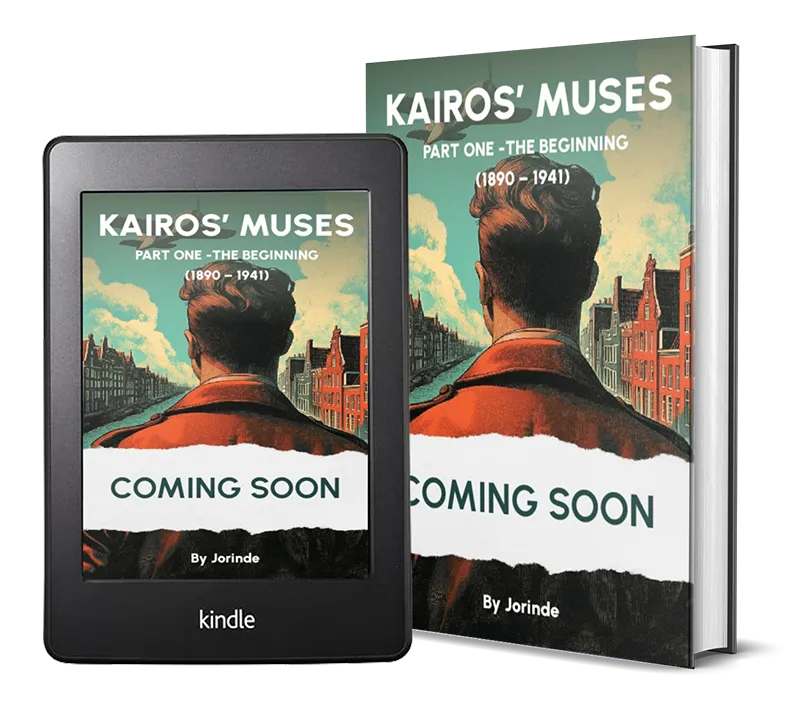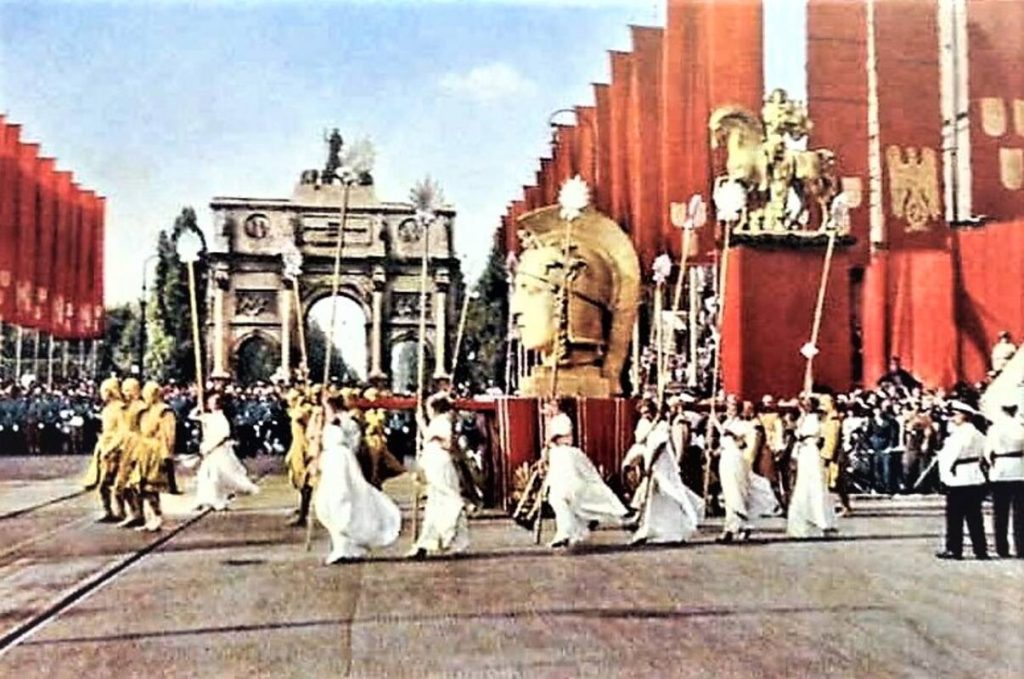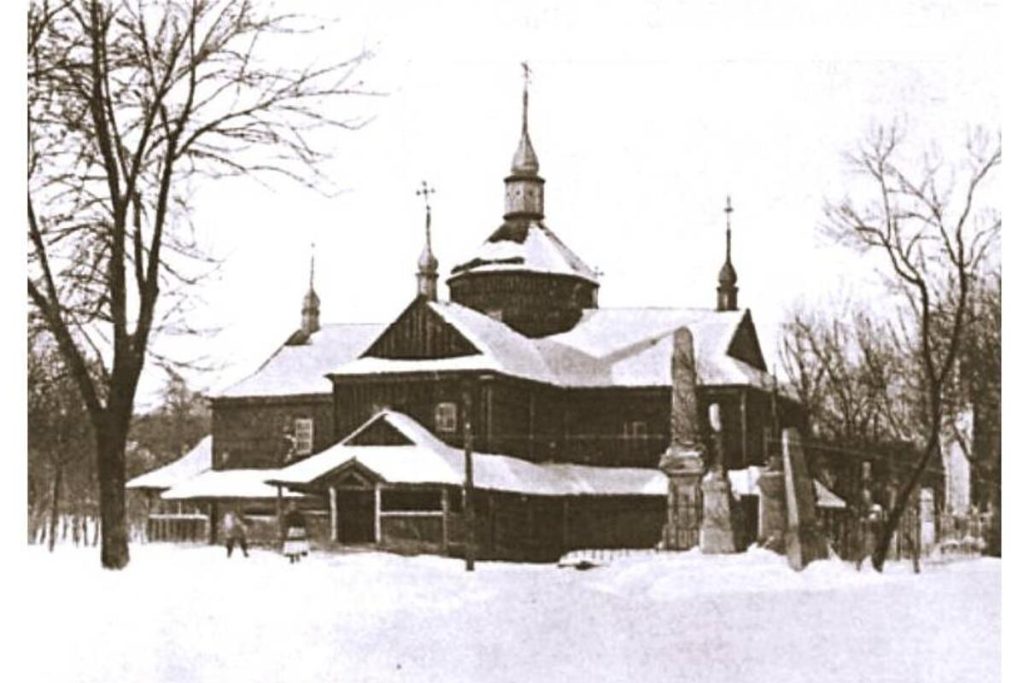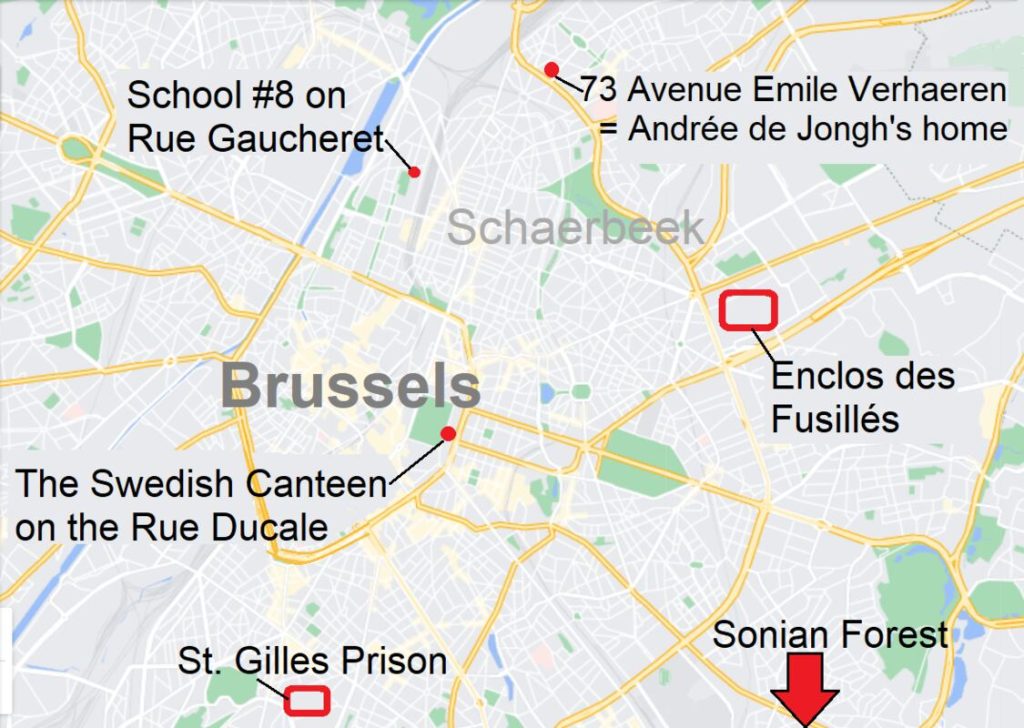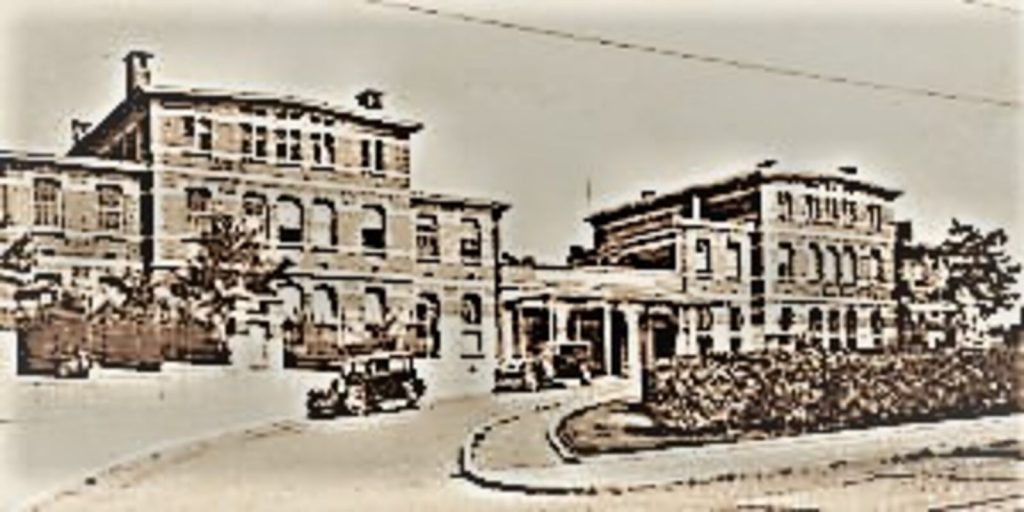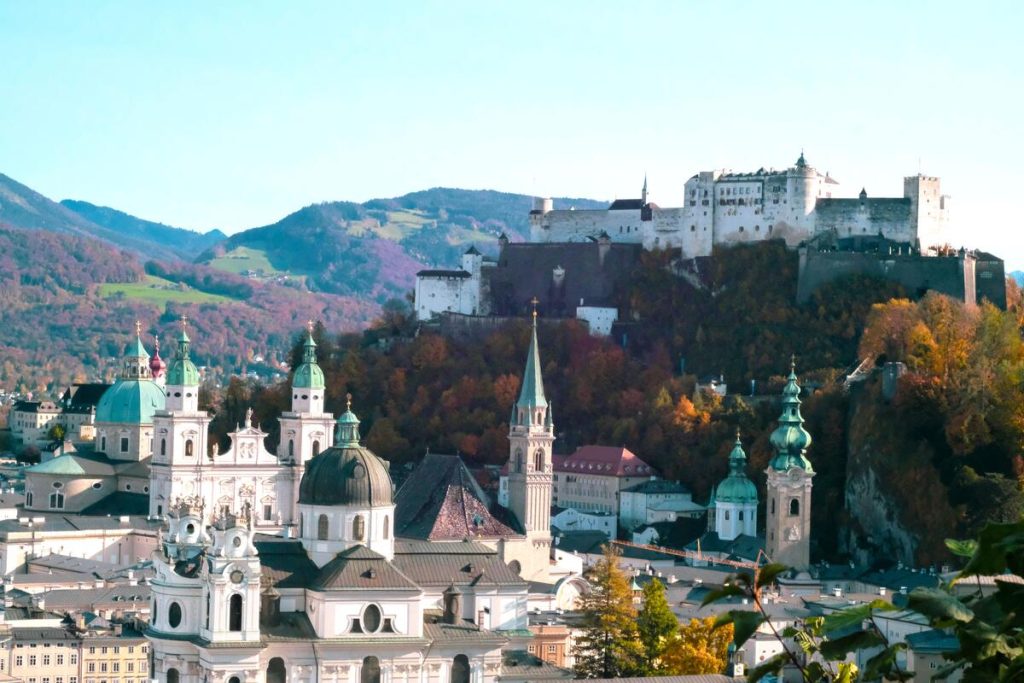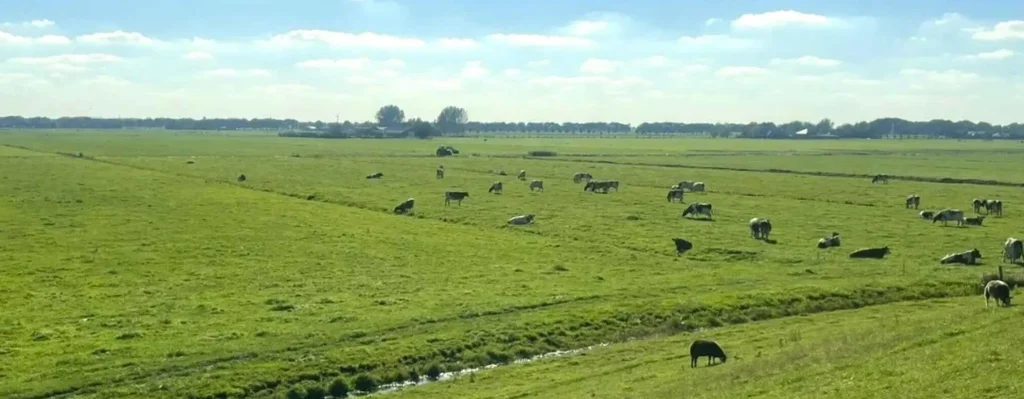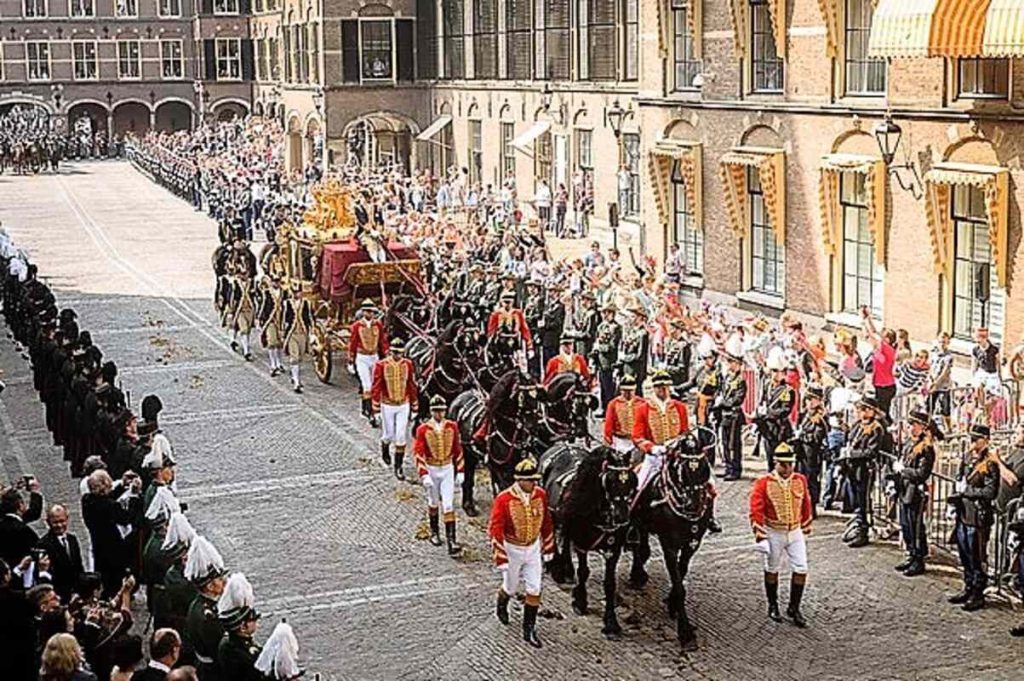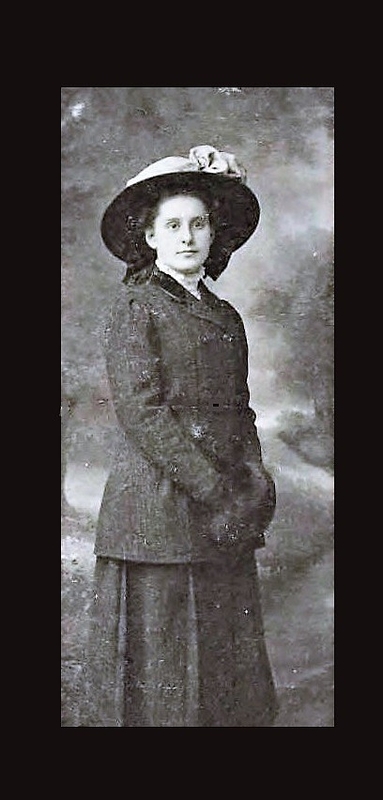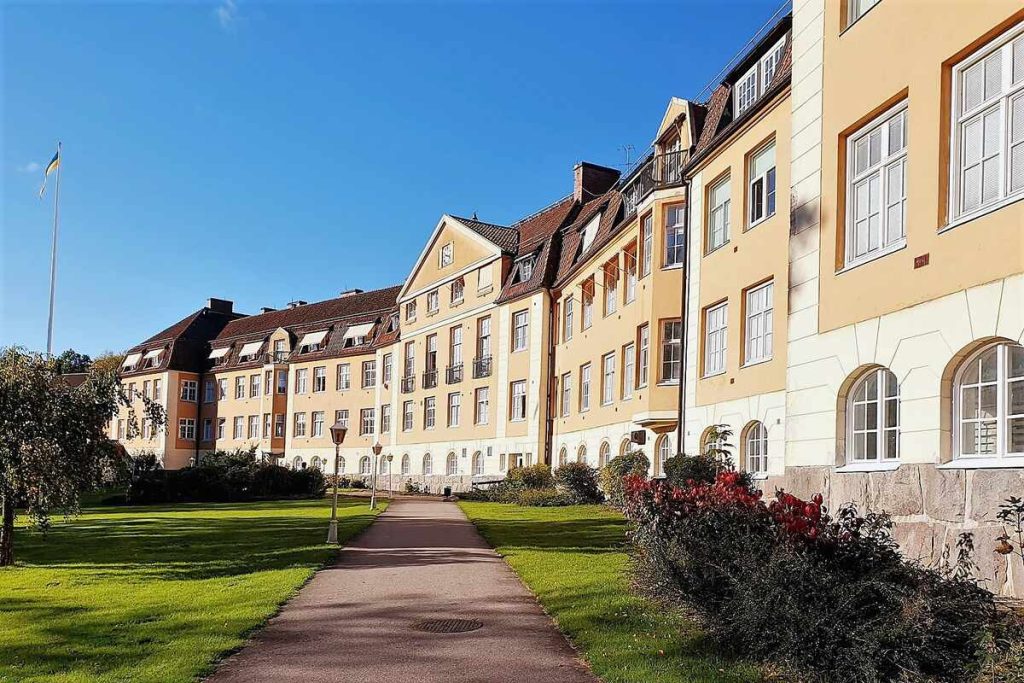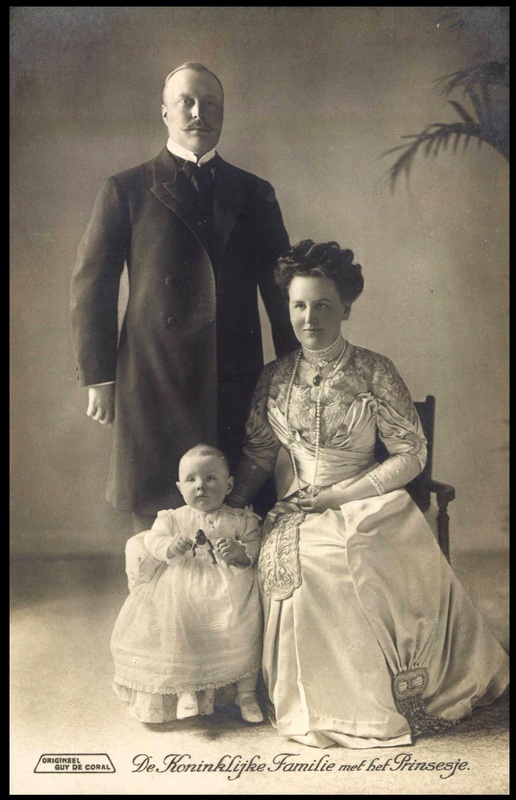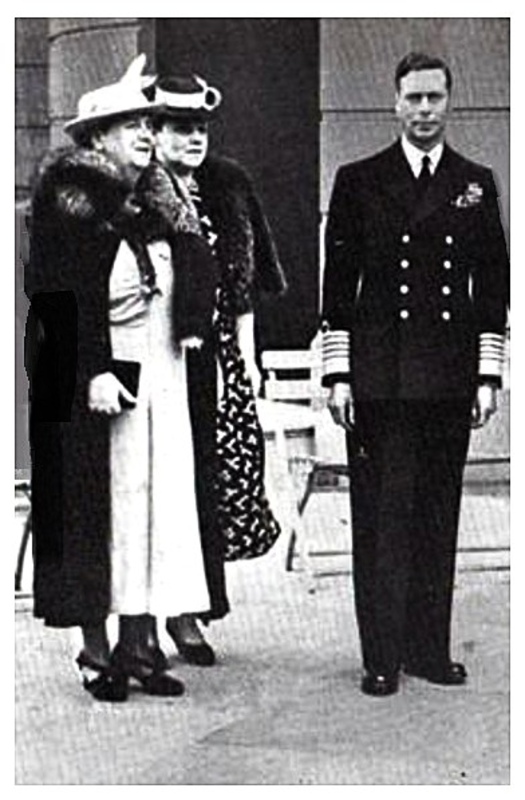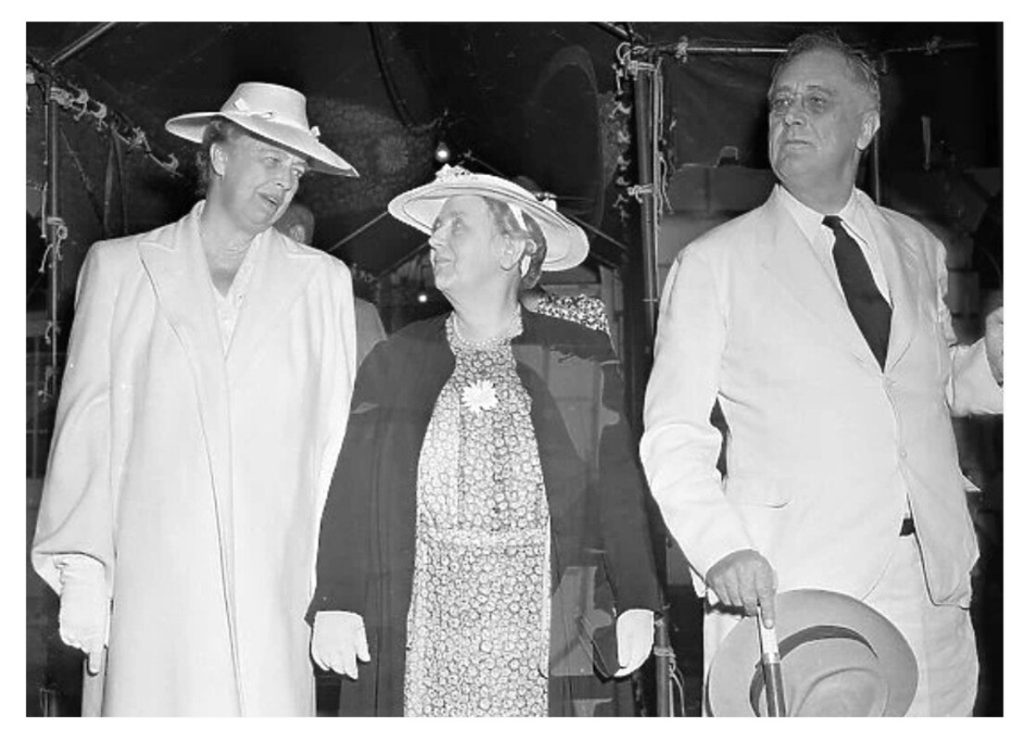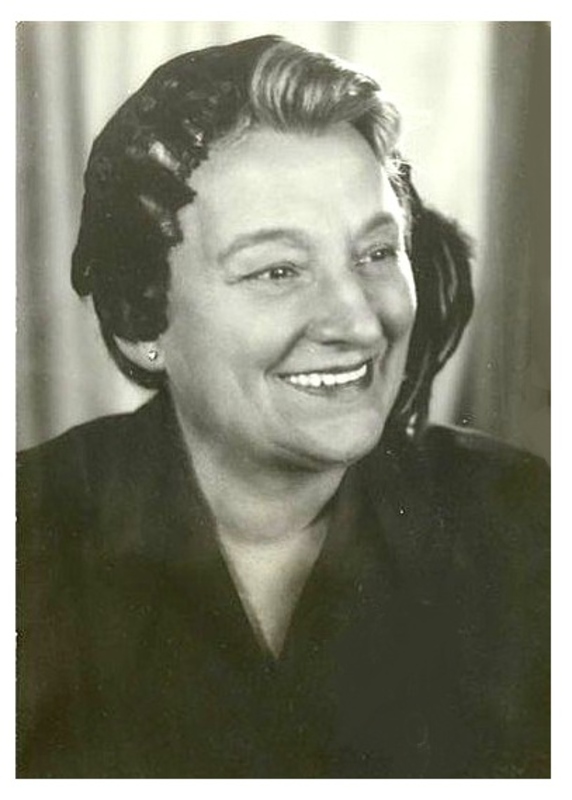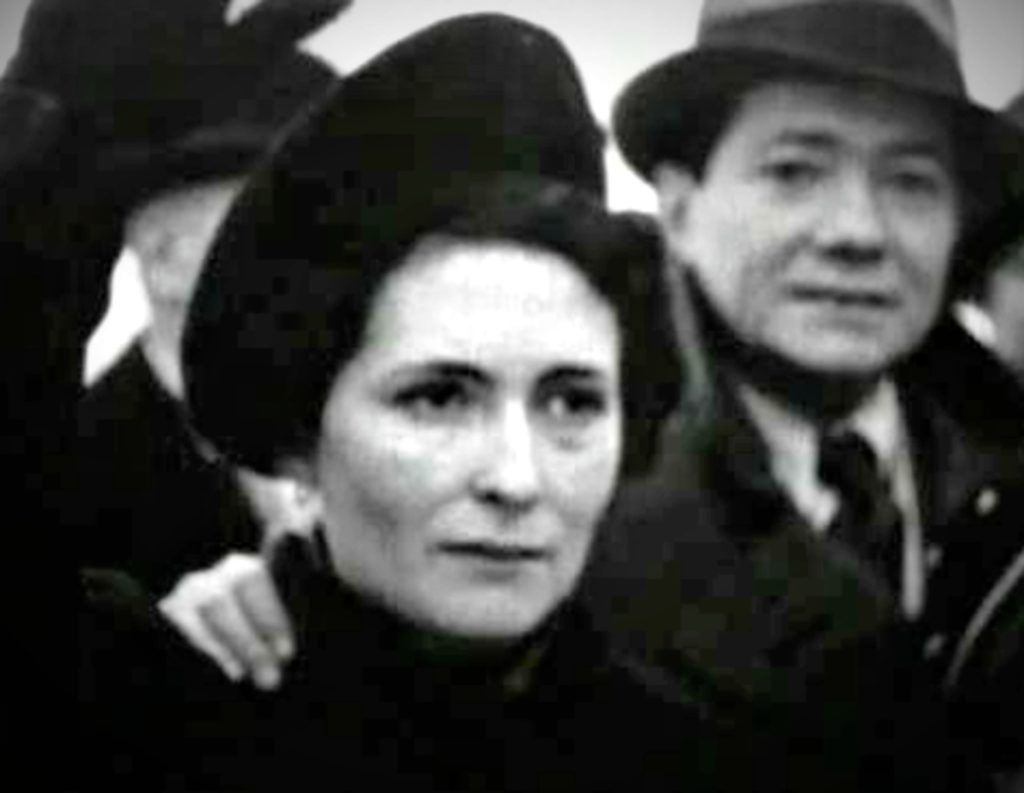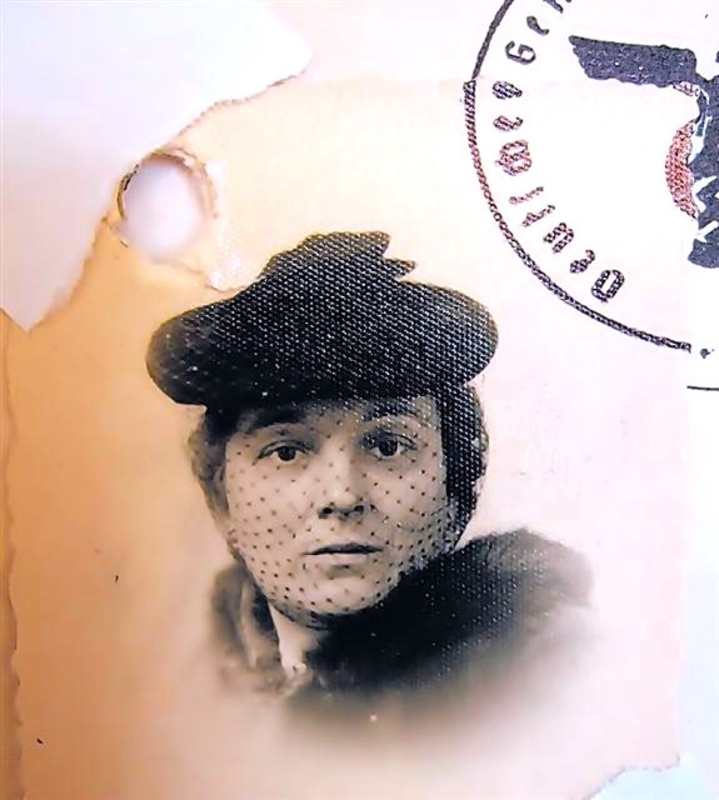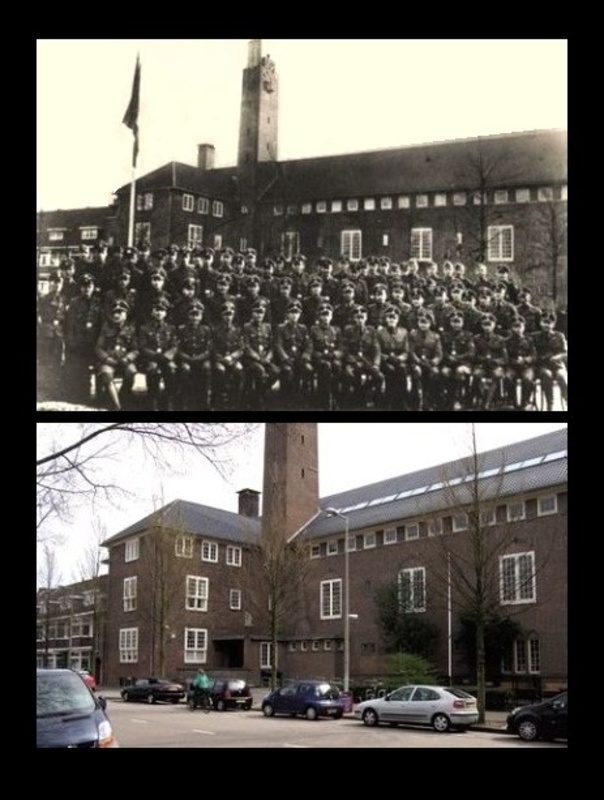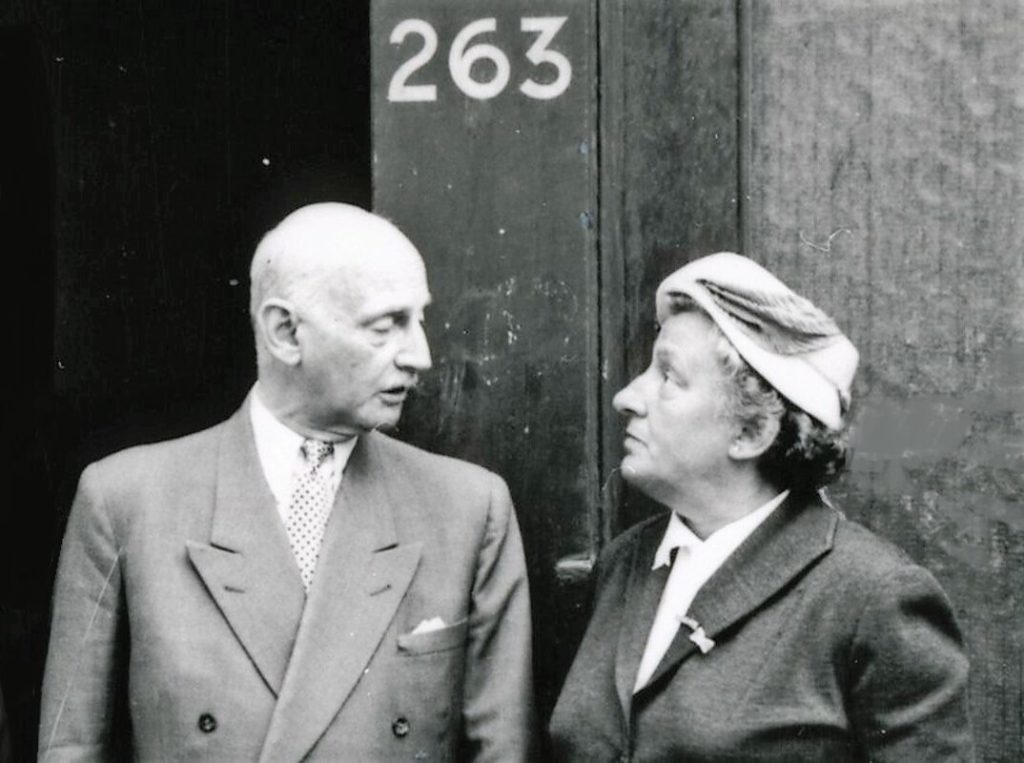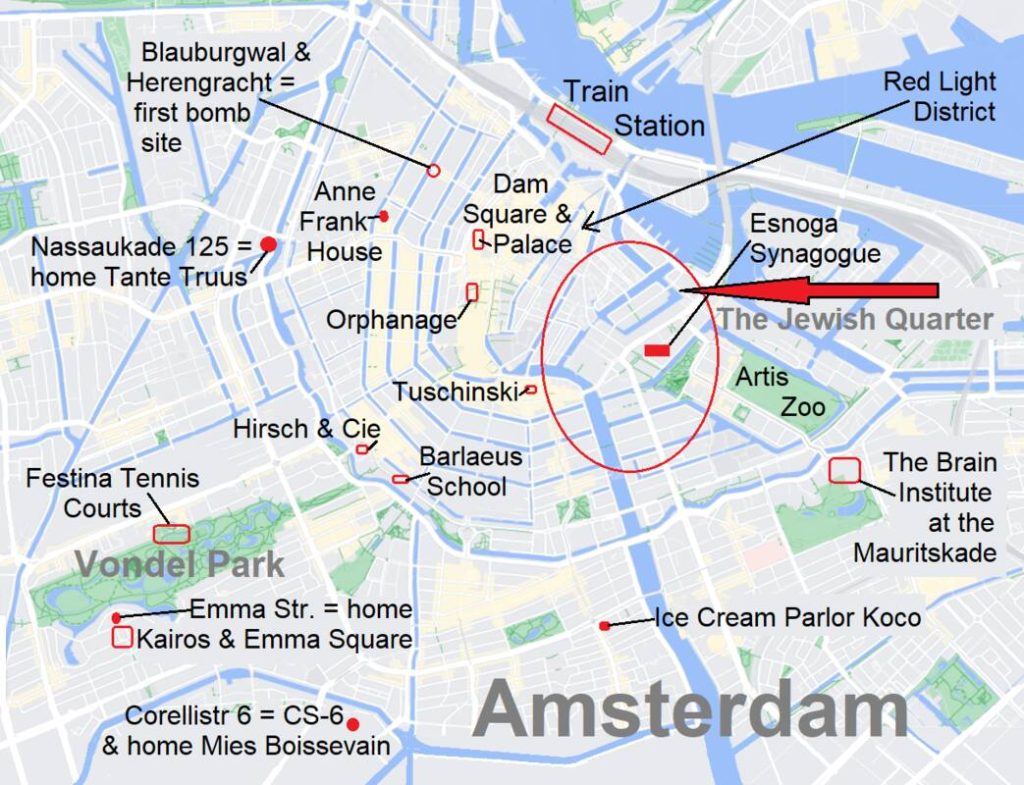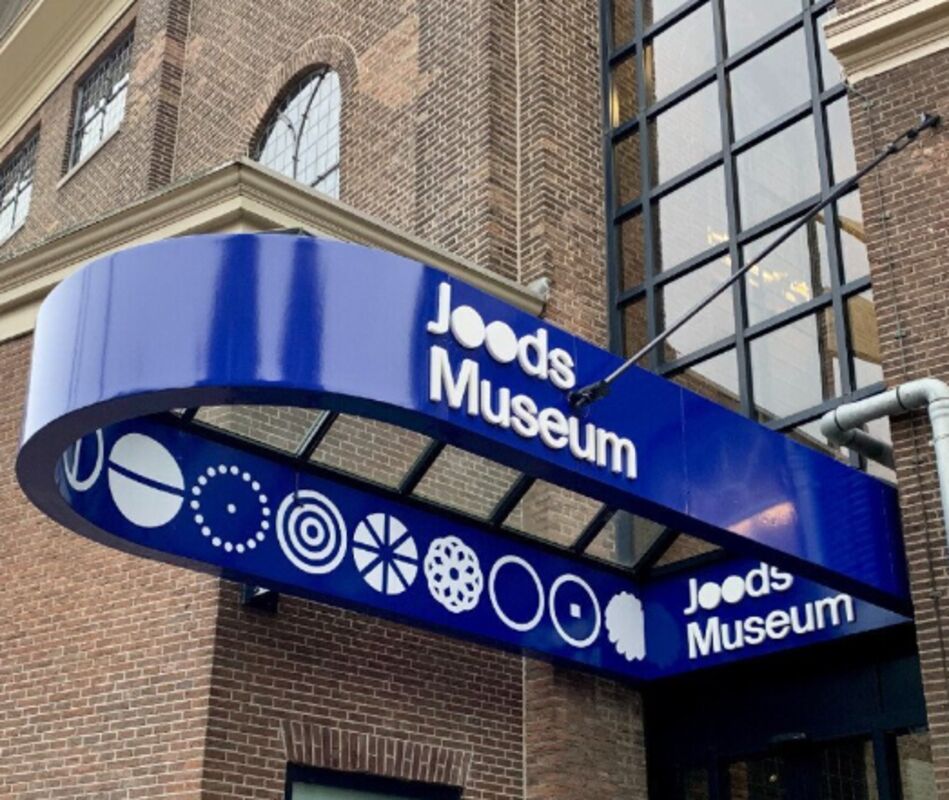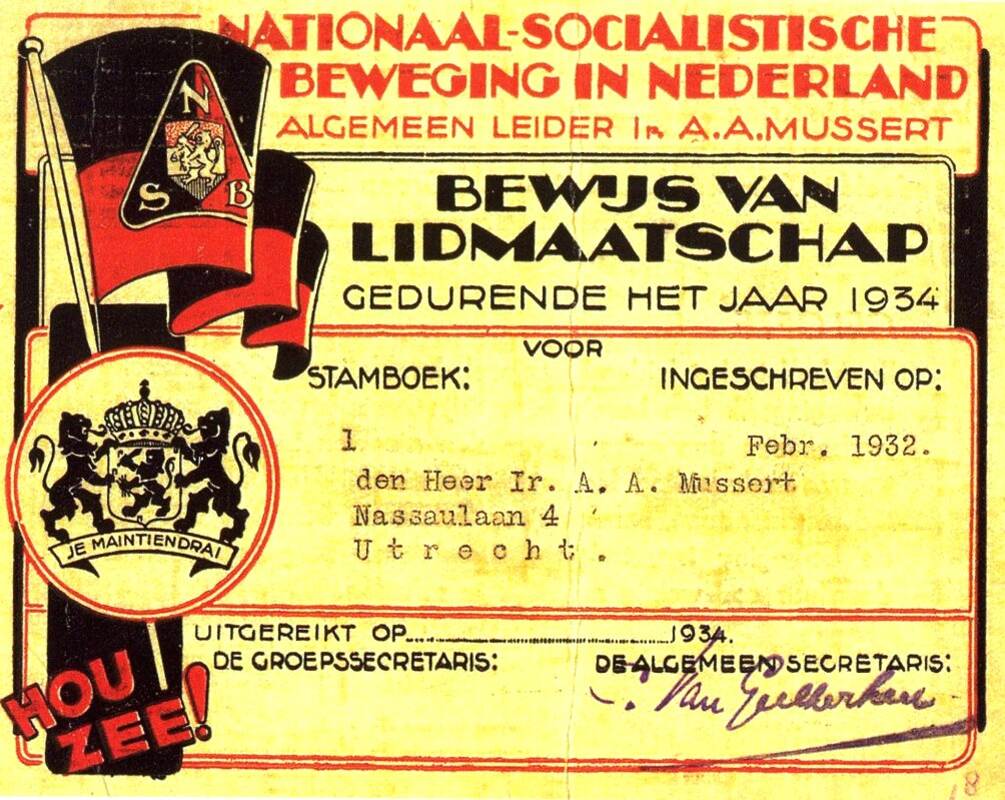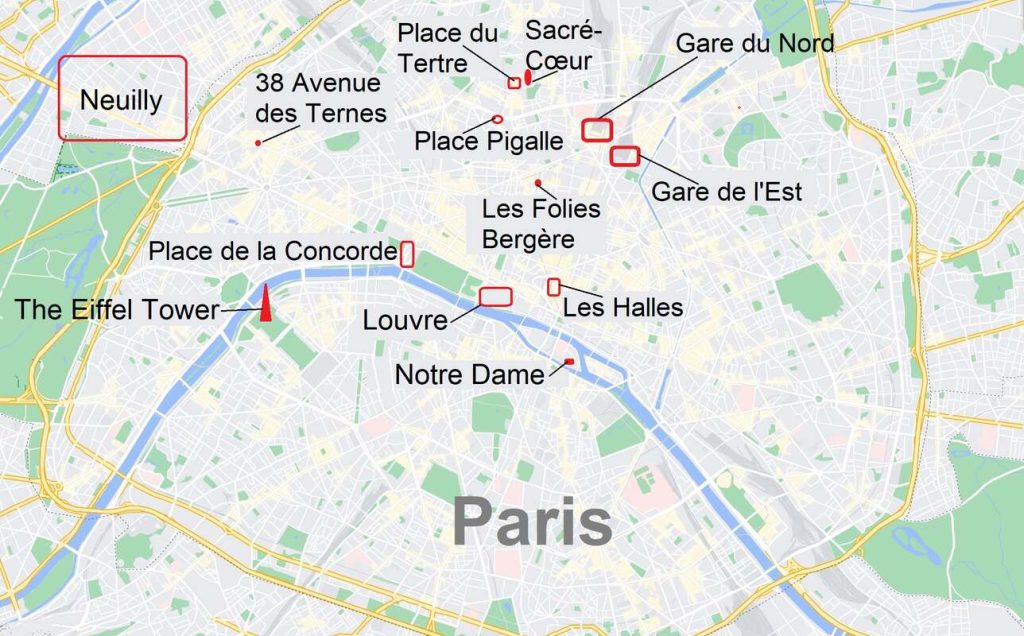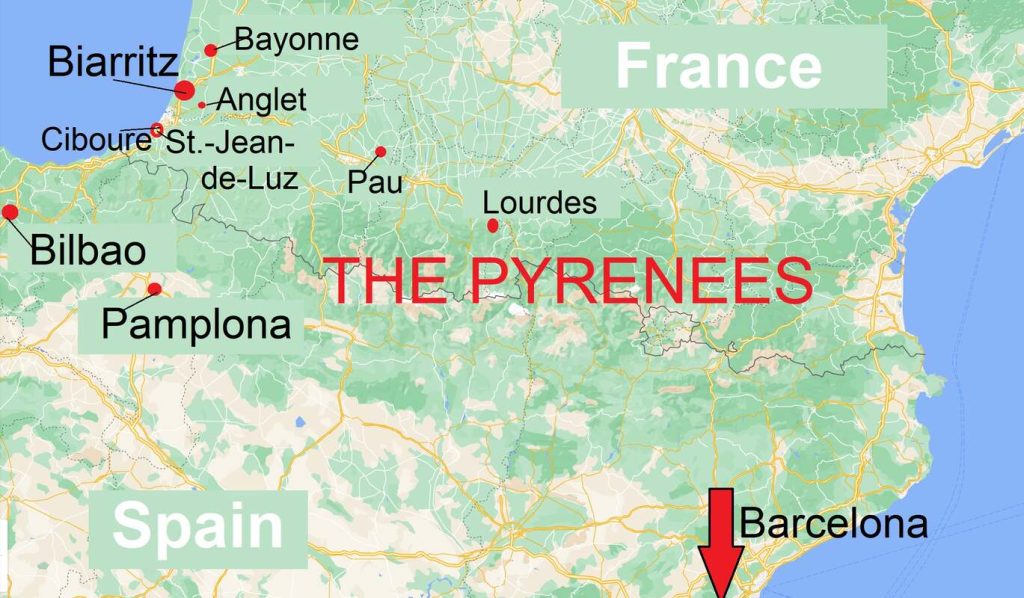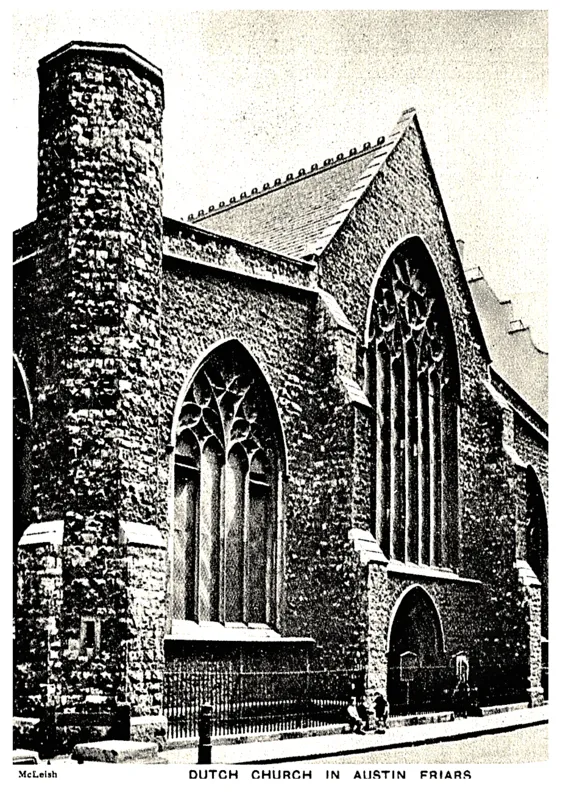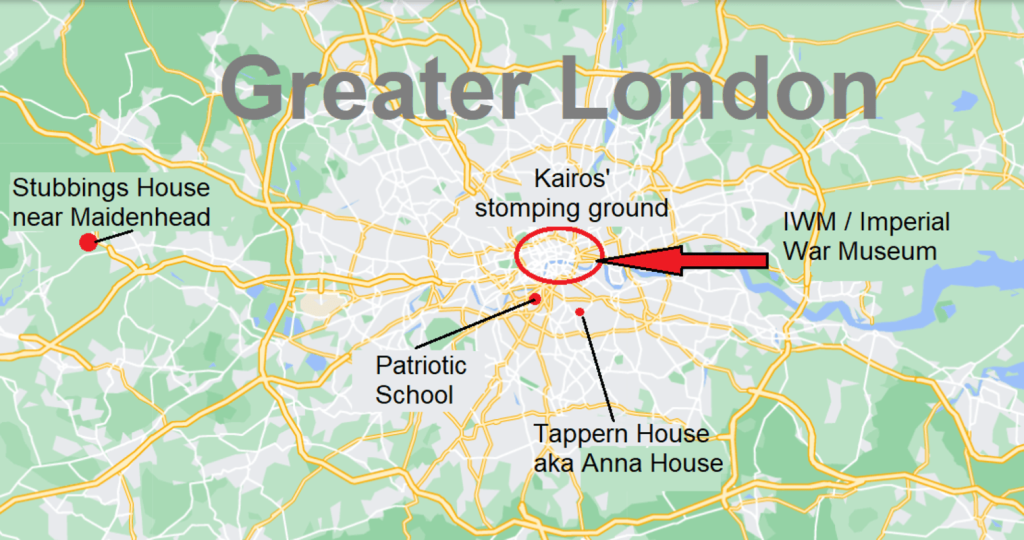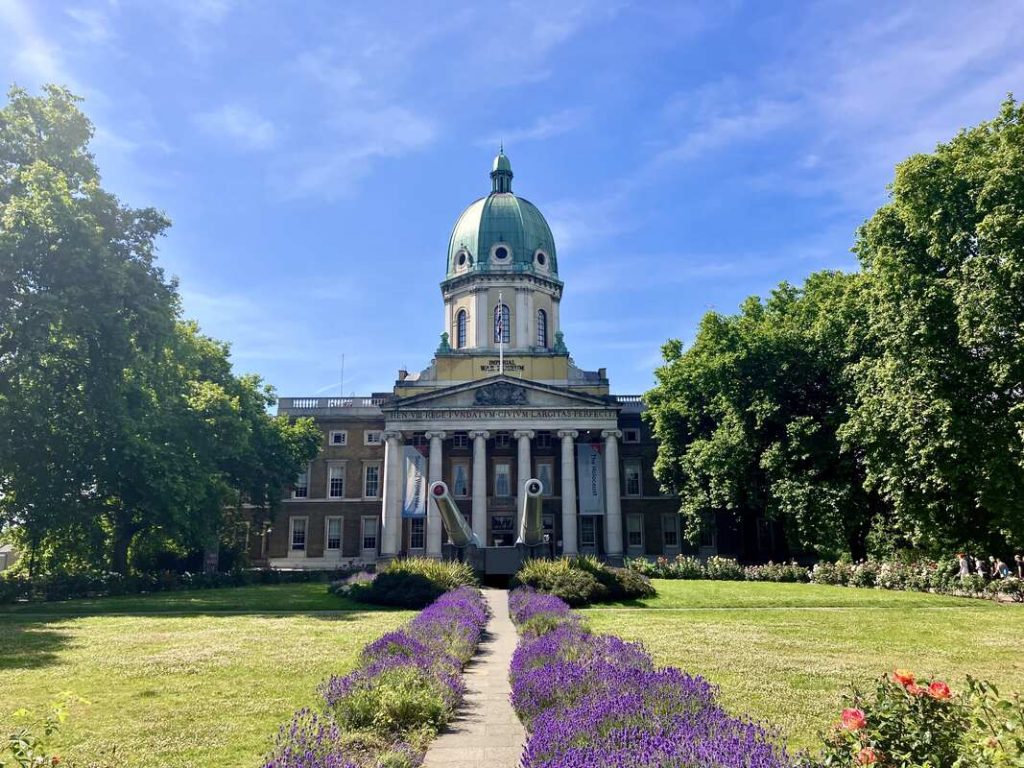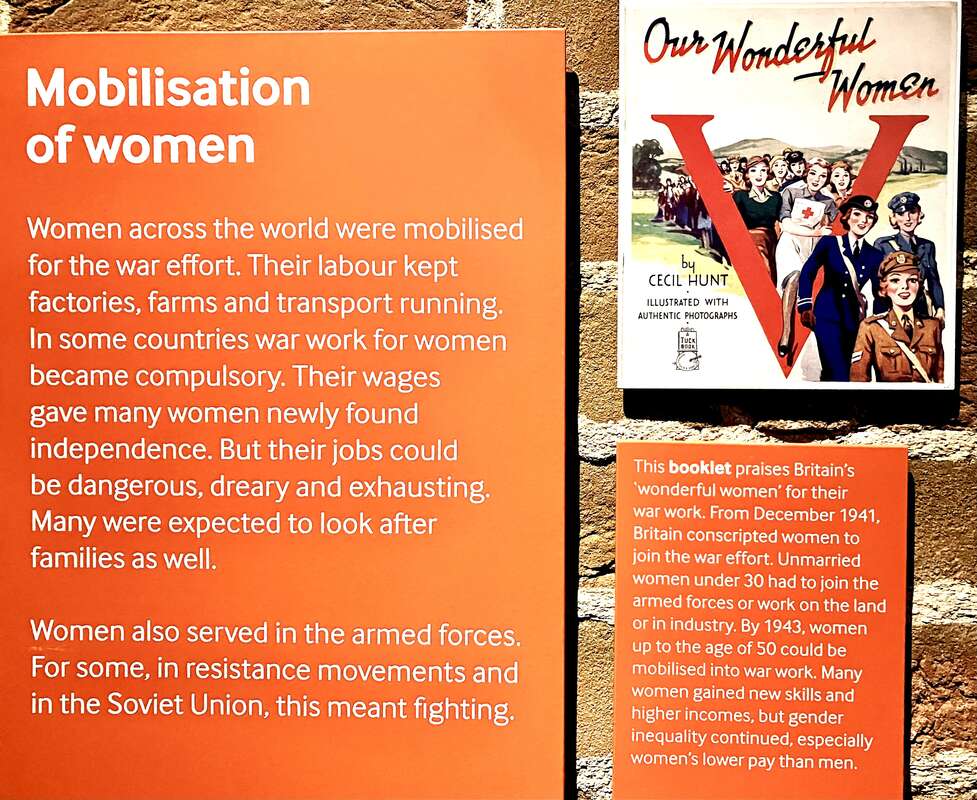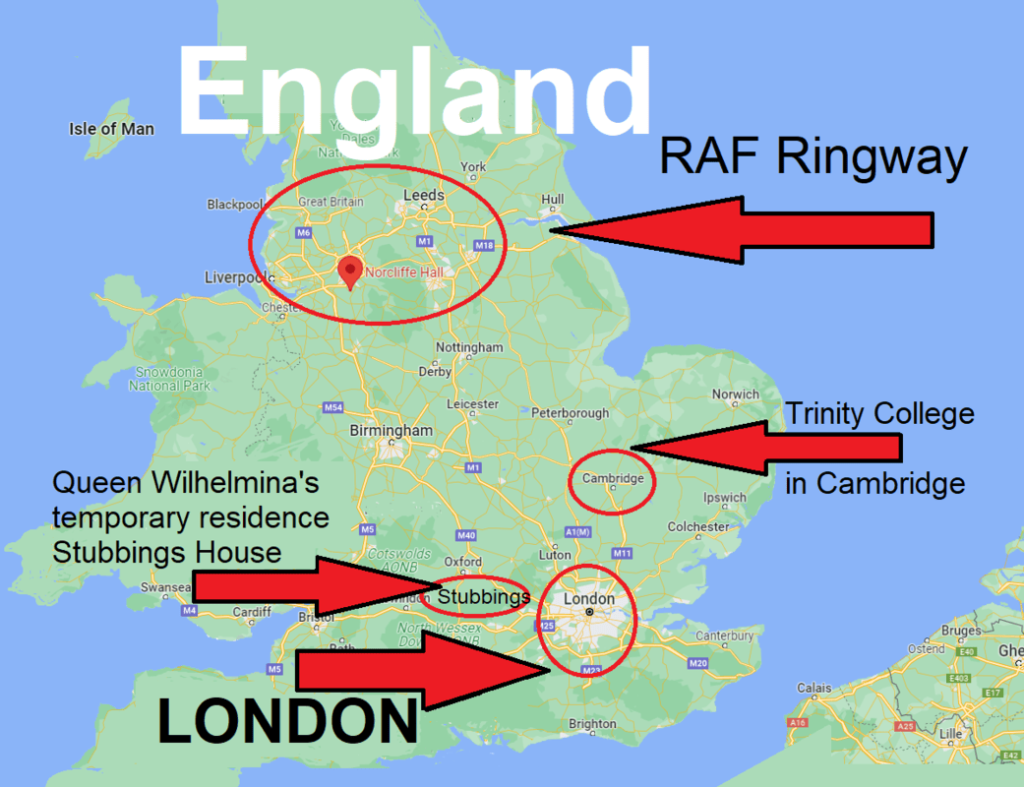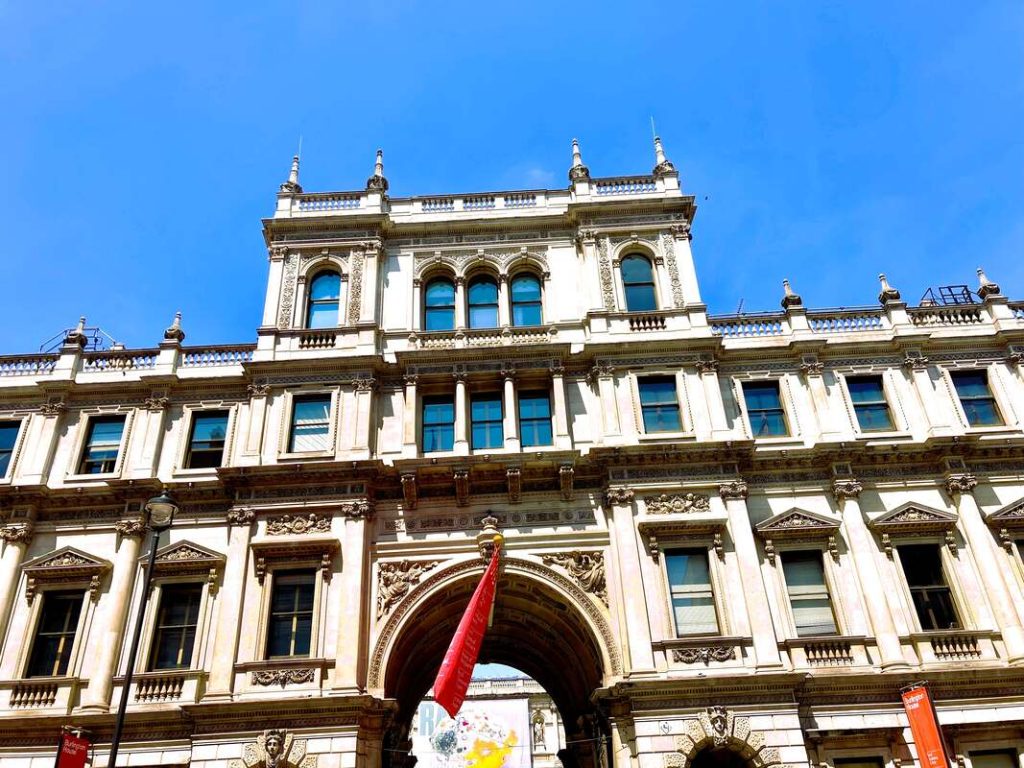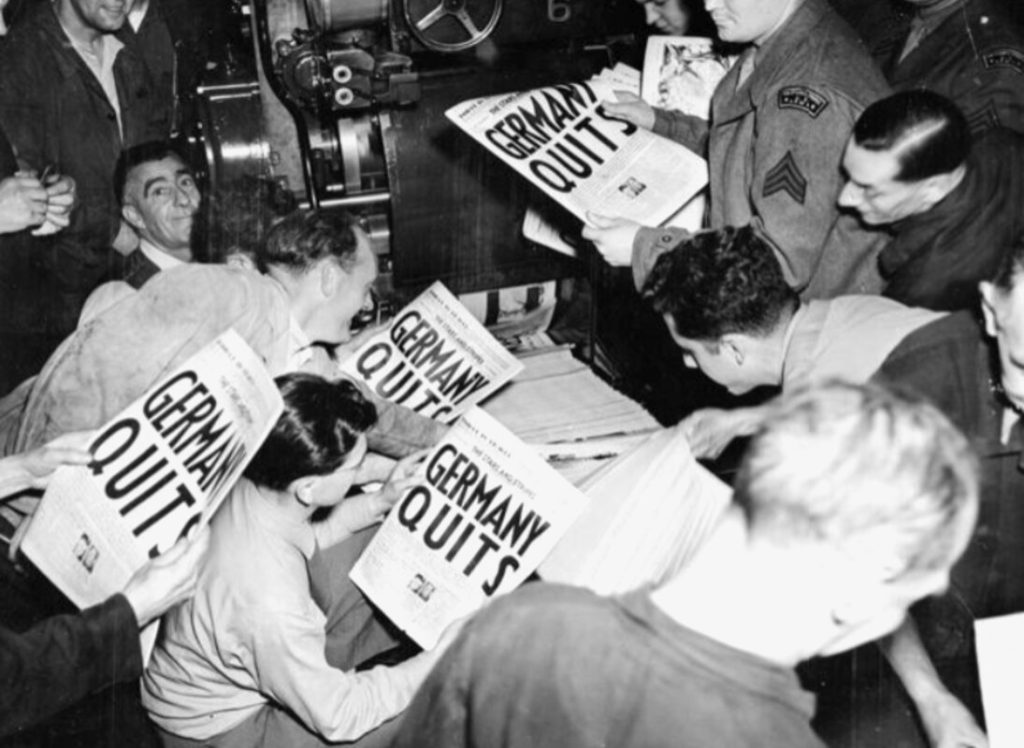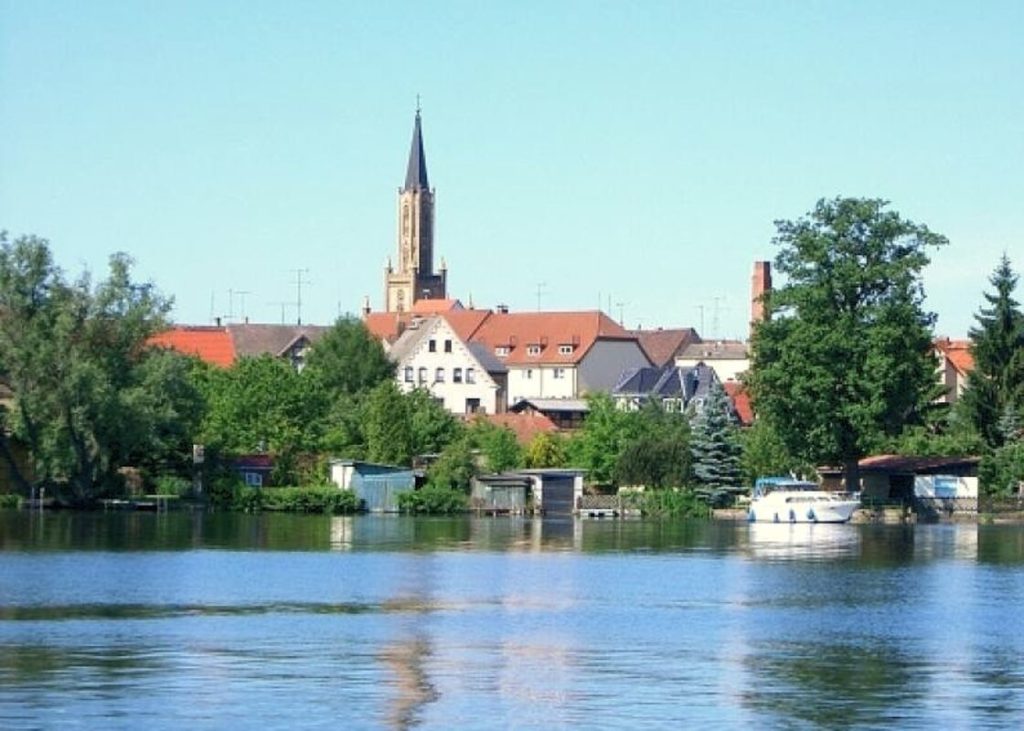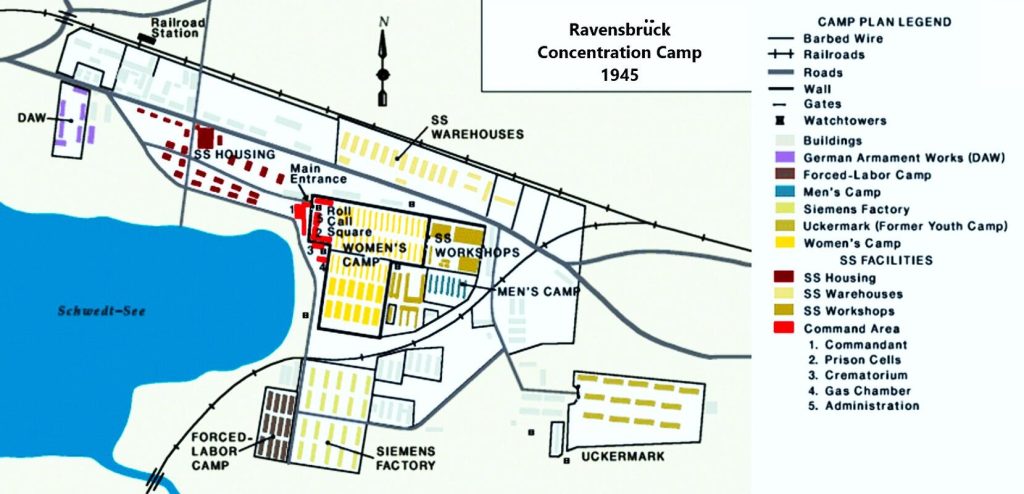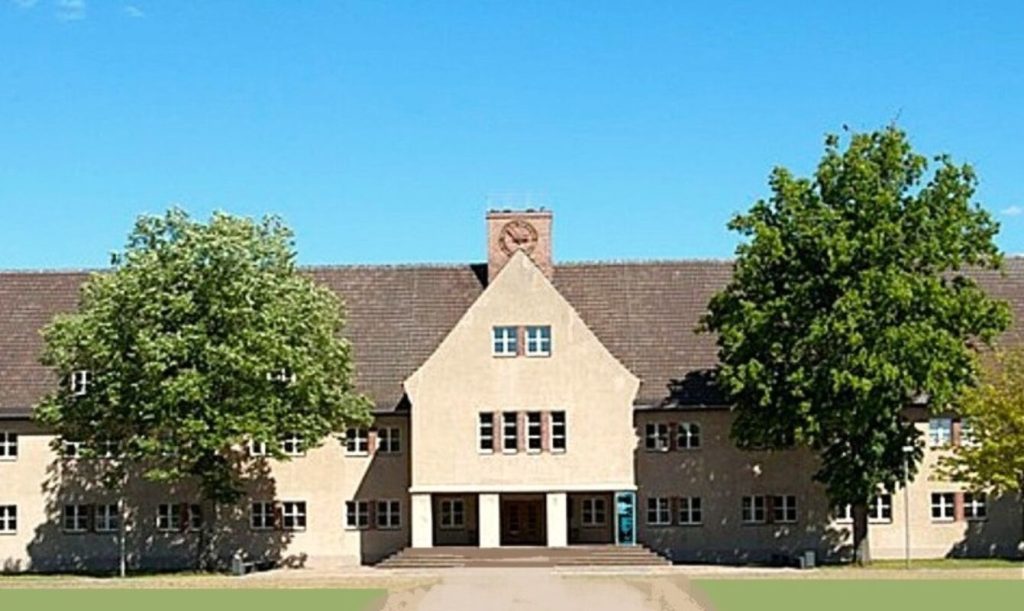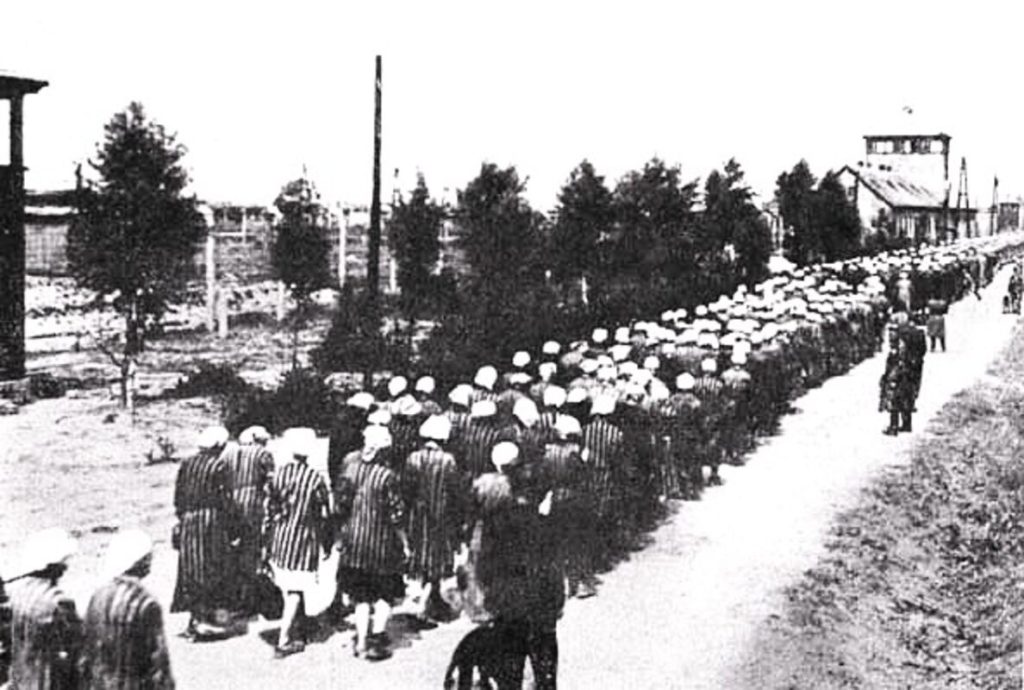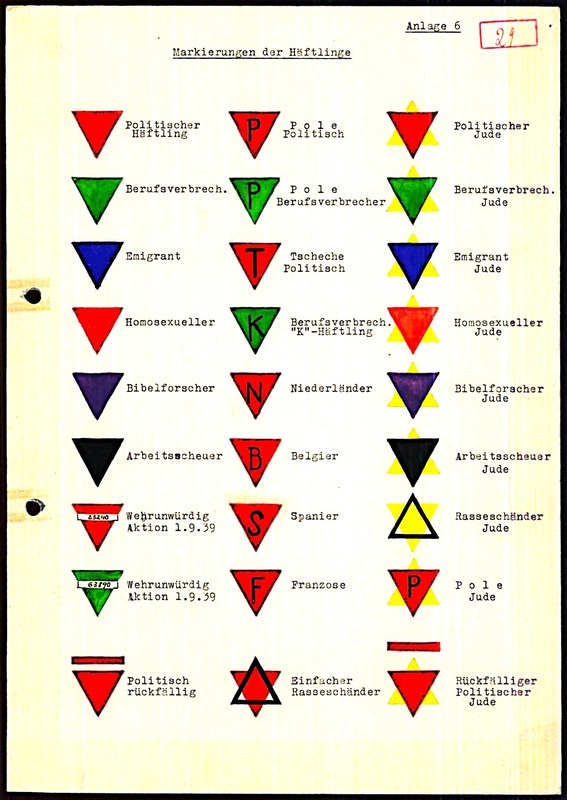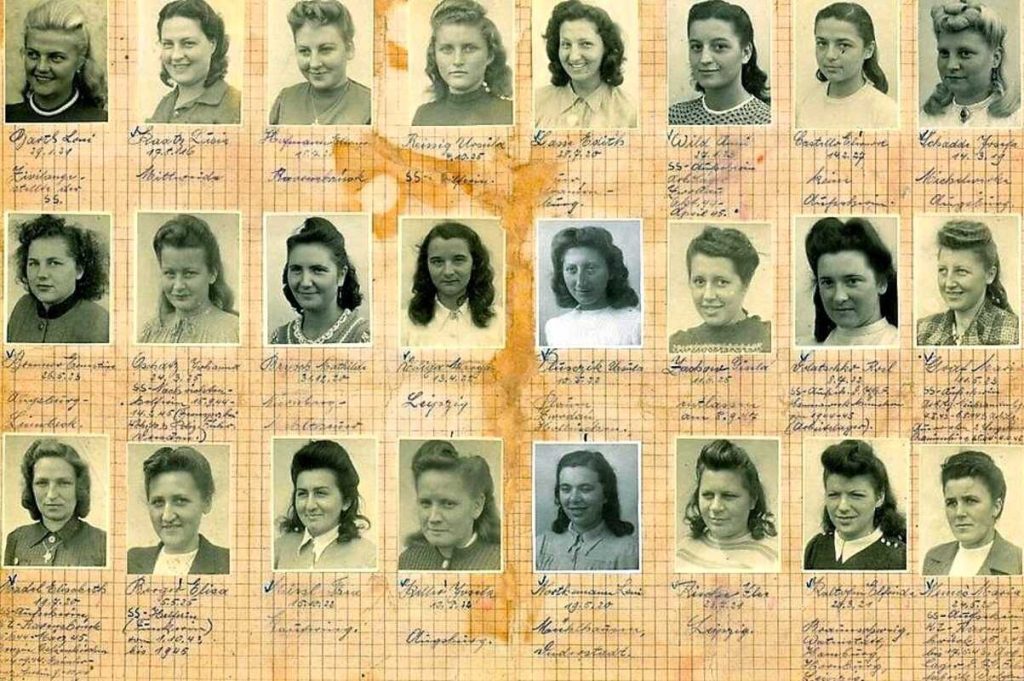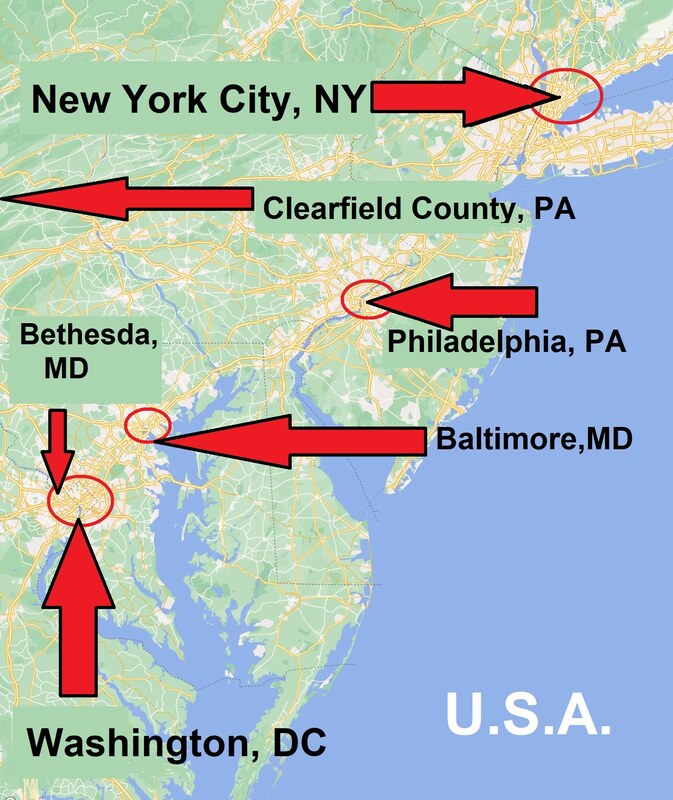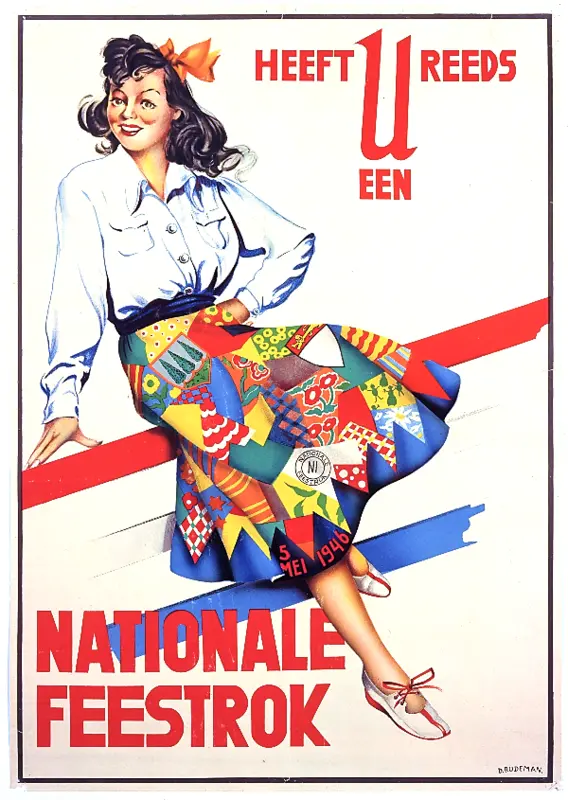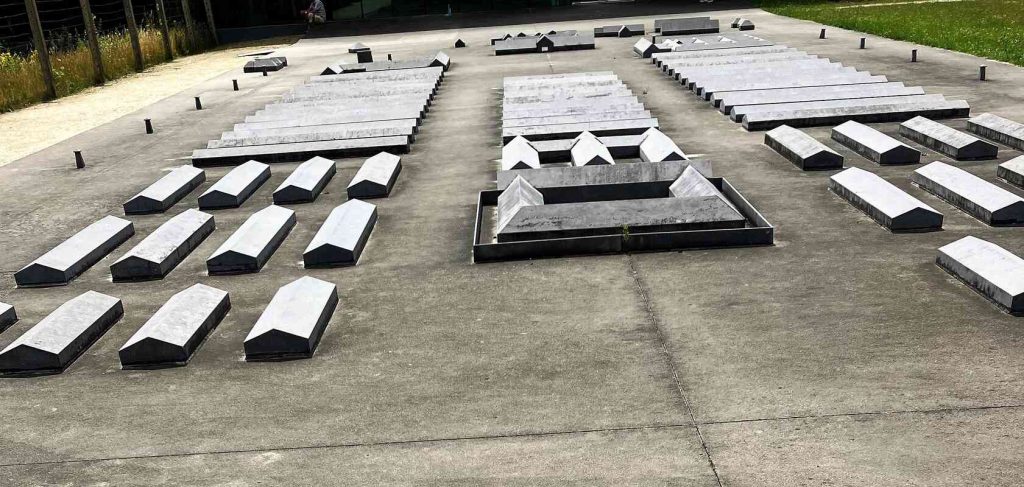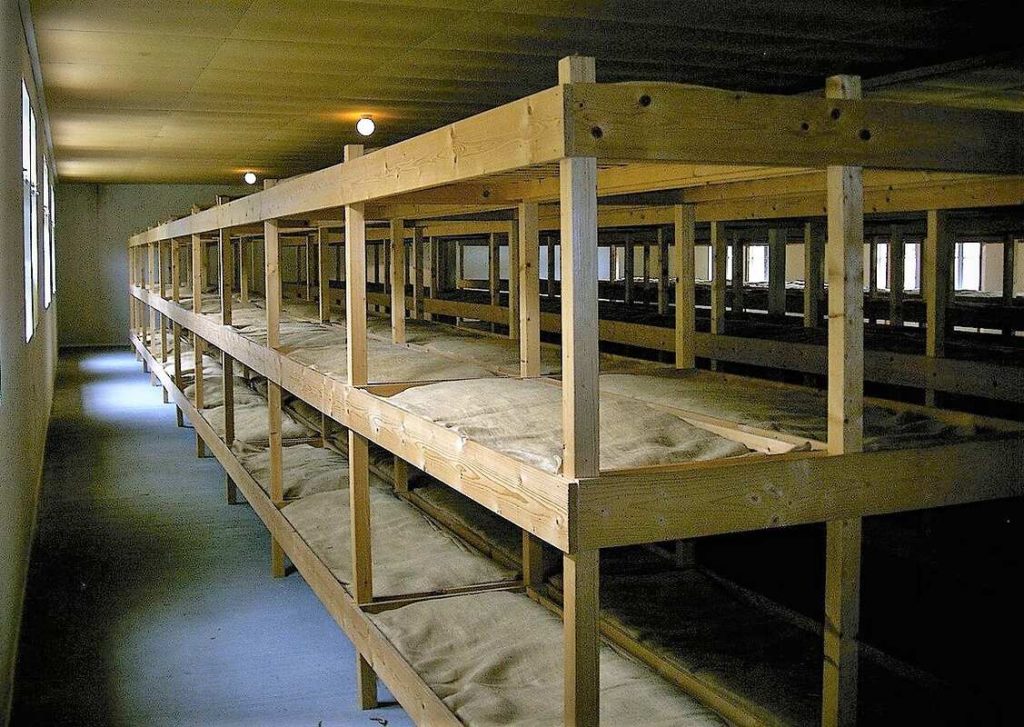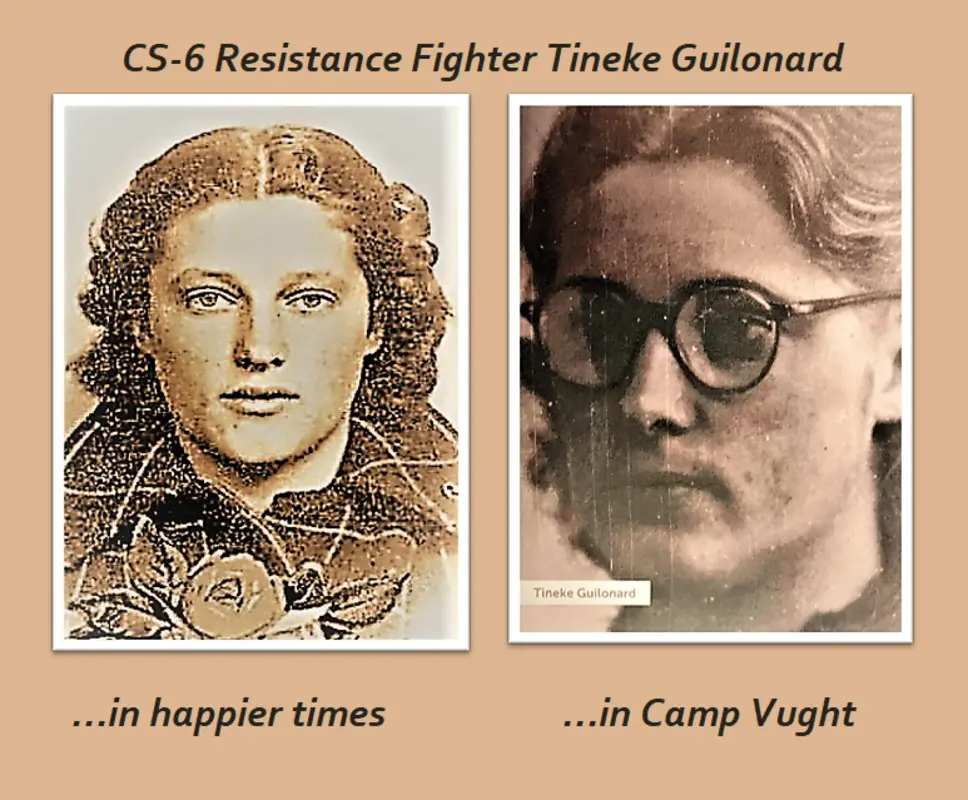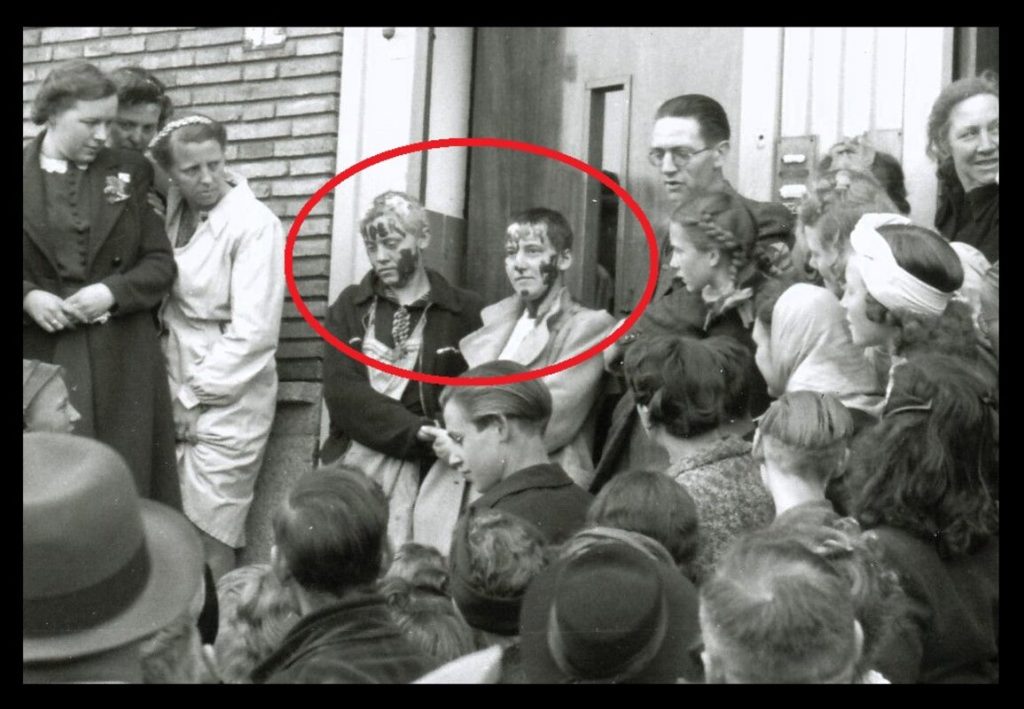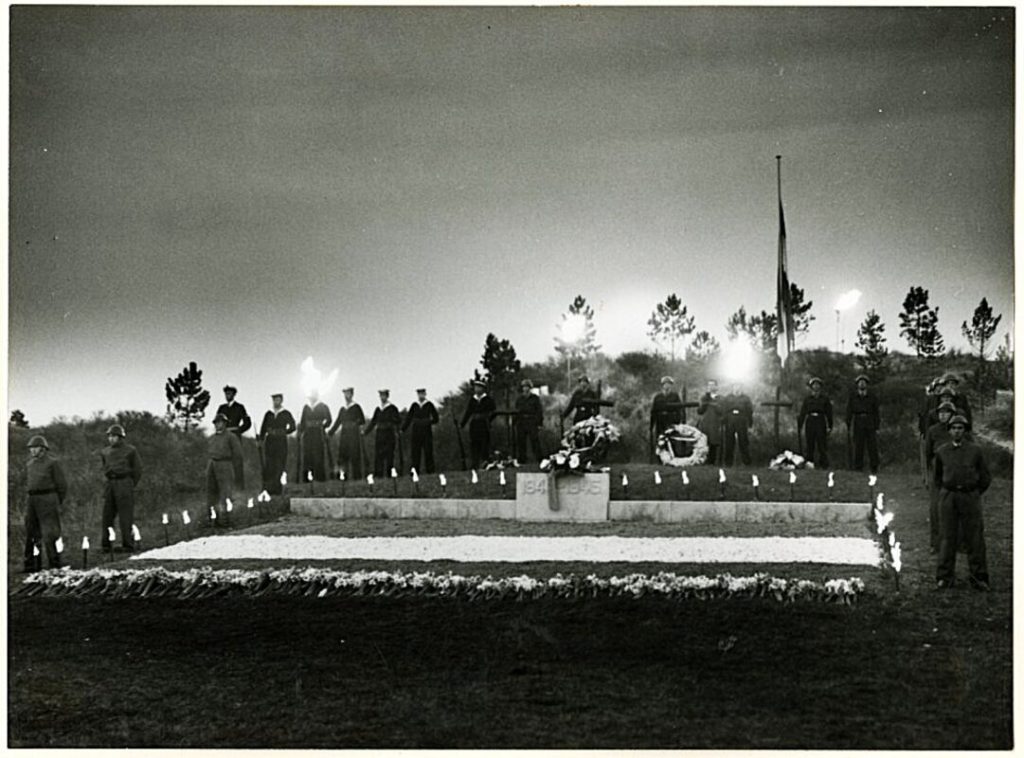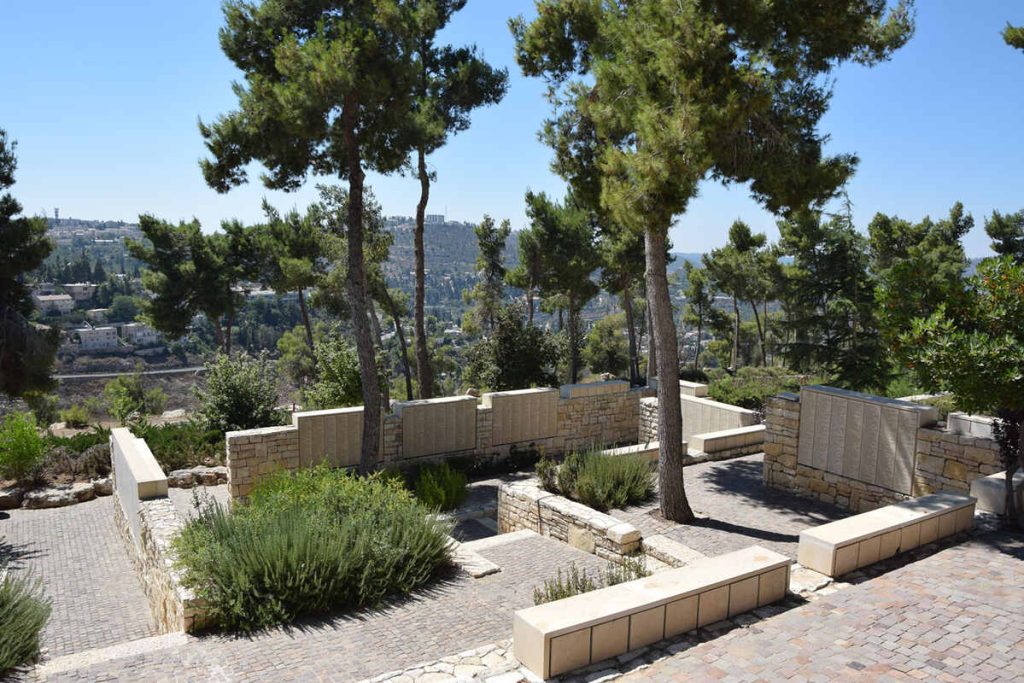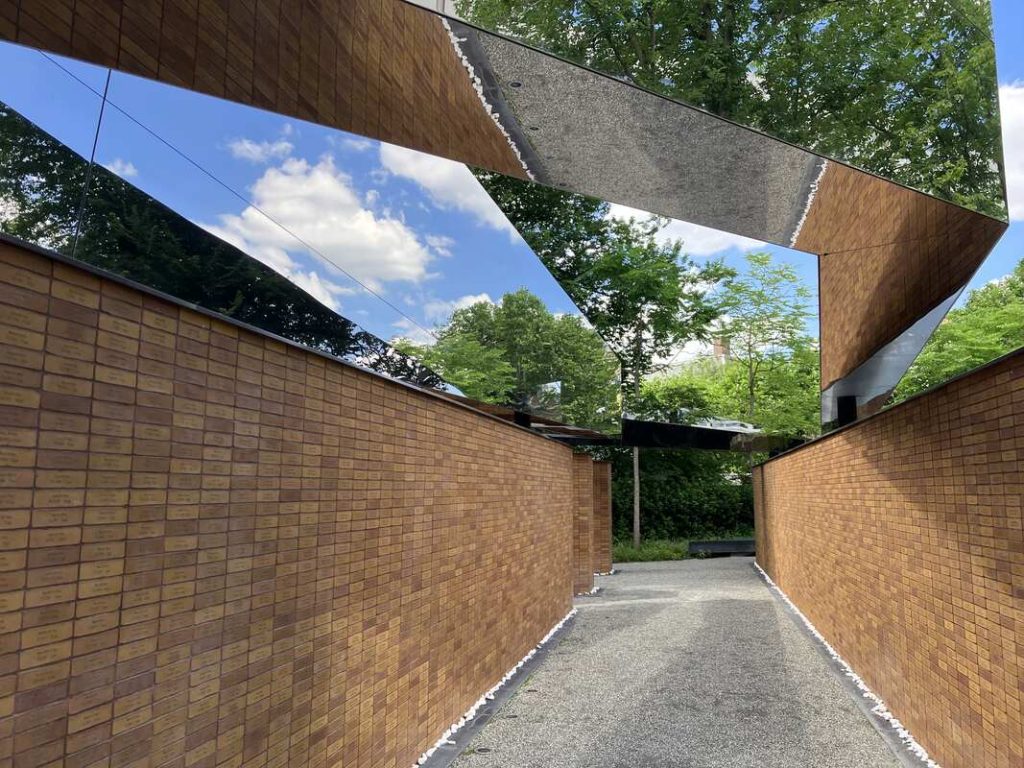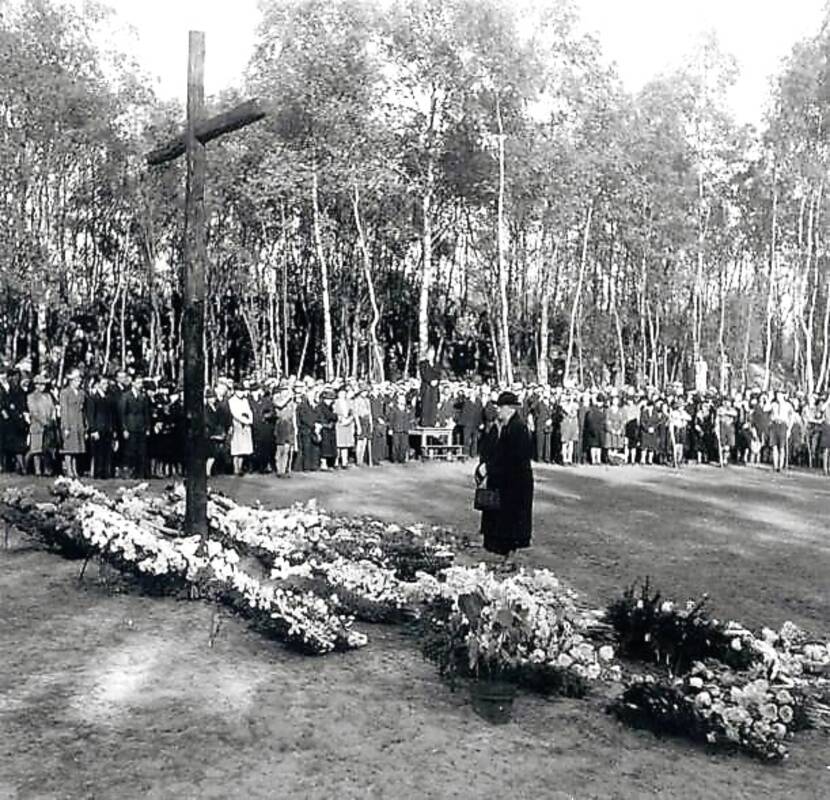EDELINE ADLER – in the Amsterdam Orphanage
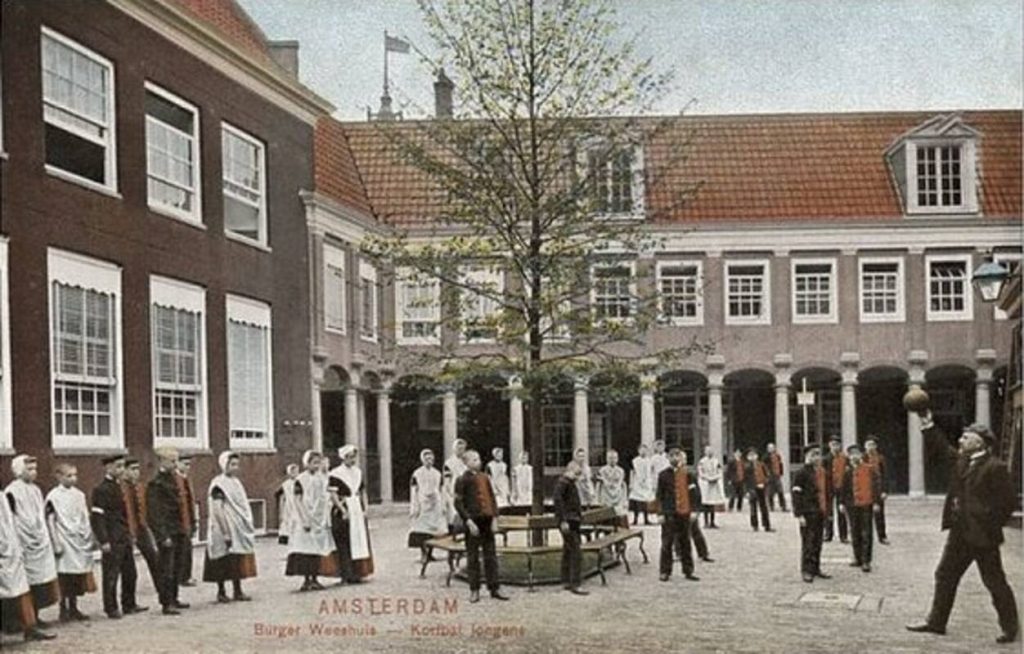
Unknown photographers

The building that is currently the Amsterdam Museum was known to Edeline Adler as the Amsterdam Orphanage. Built in 1580s, the old complex had once been a cloister and old men’s home. The “Wilhelmina Linden,” planted in 1898 (when Dutch Queen Wilhelmina turned 18 and started her reign) still graces the courtyard.
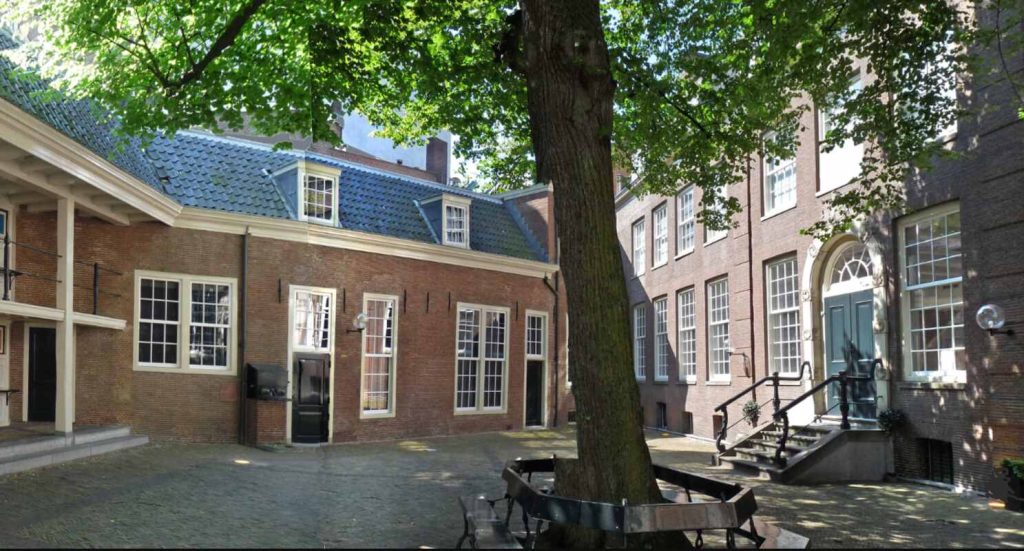
It was here that Mrs. Wijsmuller brought some of the Jewish children from the Kindertransports. Depending on when they arrived, the children lived at the Amsterdam Orphanage for only a few months to a year until the war broke out. They ate Kosher, but supposedly “awful” food provided by the Jewish Kitchen, attended Mr. Borstel’s classes, and were taken on the occasional field trip to the Portuguese Synagogue or Artis Zoo.
Fact or Fiction: Fictitious Edeline Adler is based on survivors’ stories. Everything about the children at the Amsterdam Orphanage is true.
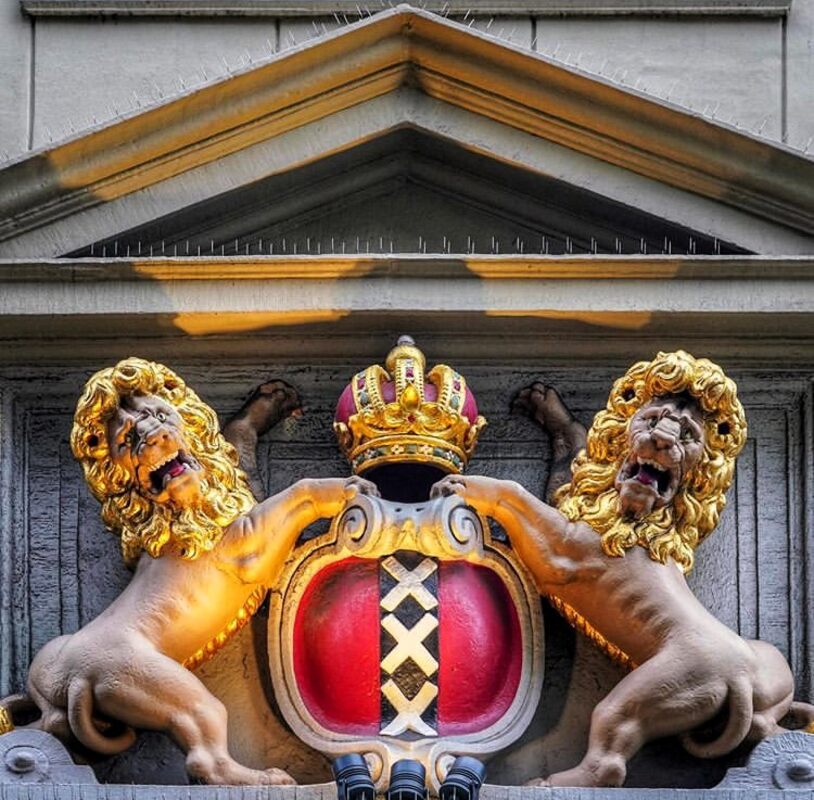
Picture credit: Jorinde
This is the crest of the city of Amsterdam that Edeline Adler, the girl who ends up in the orphanage after having come with the first Kindertransport, contemplates. Amsterdam and all the beauty as well as the misery that it will ultimately bring her will test her sorely…Will she survive?
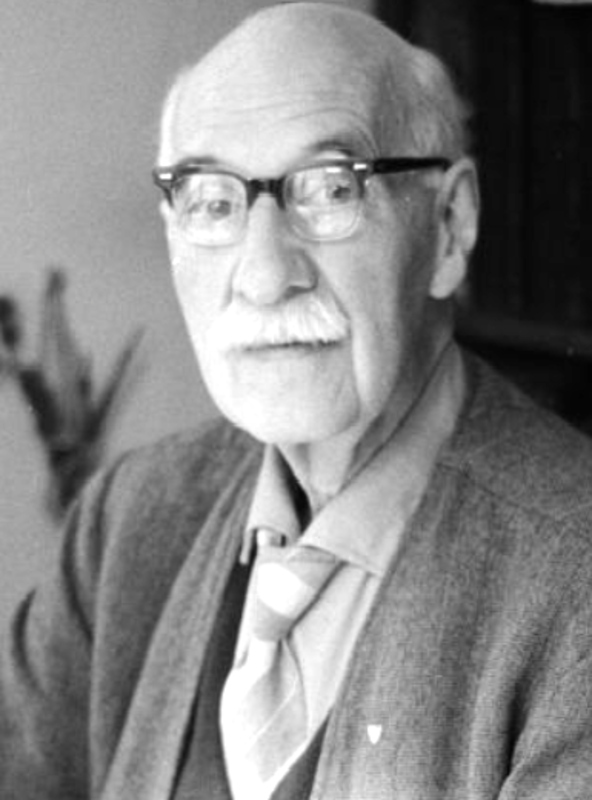
Unknown Photographer
The Swiss-Dutch director of Artis Zoo, Armand Louis Jean Sunier was a renowned biologist who saved some animals (like the European bison) from extinction by instituting a breeding program. Dr. Sunier allowed the Jewish refugee children to visit the zoo for free, and often even led them around himself.
Facts – Not Fiction: Back in 1838 when the zoological society “Natura Artis Magistra” was founded, it was a research institution. The researchers’ ever-growing menagerie later evolved into a full-fledged zoo in the middle of Amsterdam, where particularly the Jewish elite would congregate on the shabbat and Jewish holidays (because they were allowed to pay for the tickets the day after).
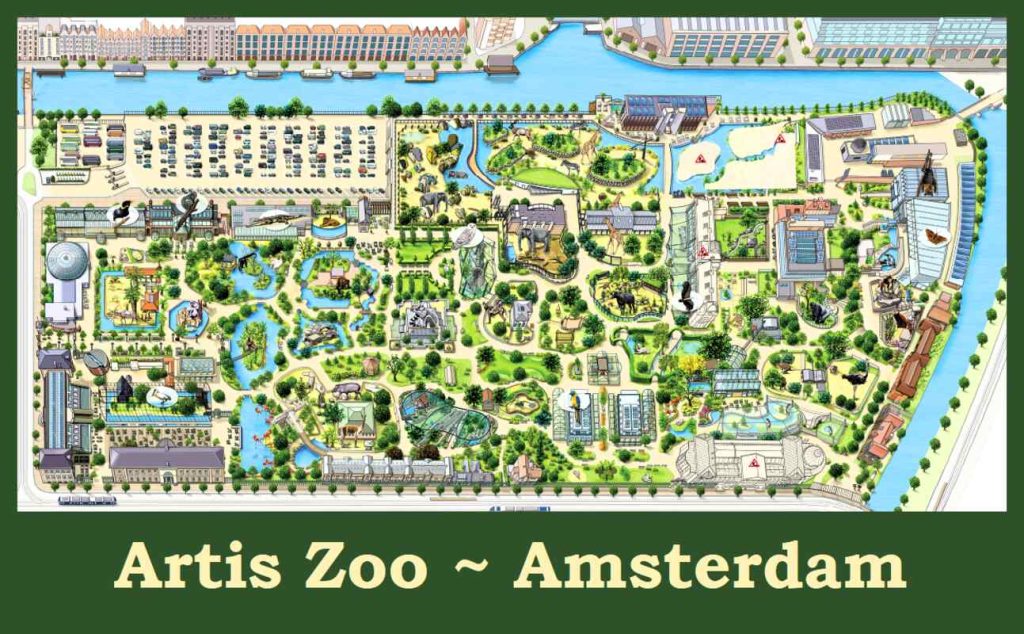
Unknown Artist
During the war, the German-speaking Dr. Sunier seemed to get along well with the Nazis who not only frequented the zoo, but often helped pay for straw and other essentials. Ironically, these very Nazis were not aware that the zoo tapped its electricity via a streetcar cable from their Police Station across the road and that the hollow monkey rock hid Jews during razzias.
Most of all, the Nazis certainly did not know that Dr. Sunier saved about 300 Jewish and other fugitives (from the Resistance) by employing them and / or hiding them in the zoo; at night, the haylofts, attics, and crawlspaces in and above the animal habitats housed Jewish fugitives. Also, “Little Dove,” the woman who often showed the Nazis around in broad daylight was in fact Jewish and had been “hiding” right under their noses in Artis Zoo for many years!
* * * * *
Other than her visits to the zoo and to the Wijsmuller, the Viennese orphan Edeline Adler did not have much to look forward to. When she and Kairos were saddened by the impending war and the seeming obliviousness of those around them, Kairos decides to take her on the town. Among others, they stopped at a narrow wooden house with a steep, pointed gable that had once been the home of the lock keeper, but was then the ironmonger and scrap metal business of the Gosler family.
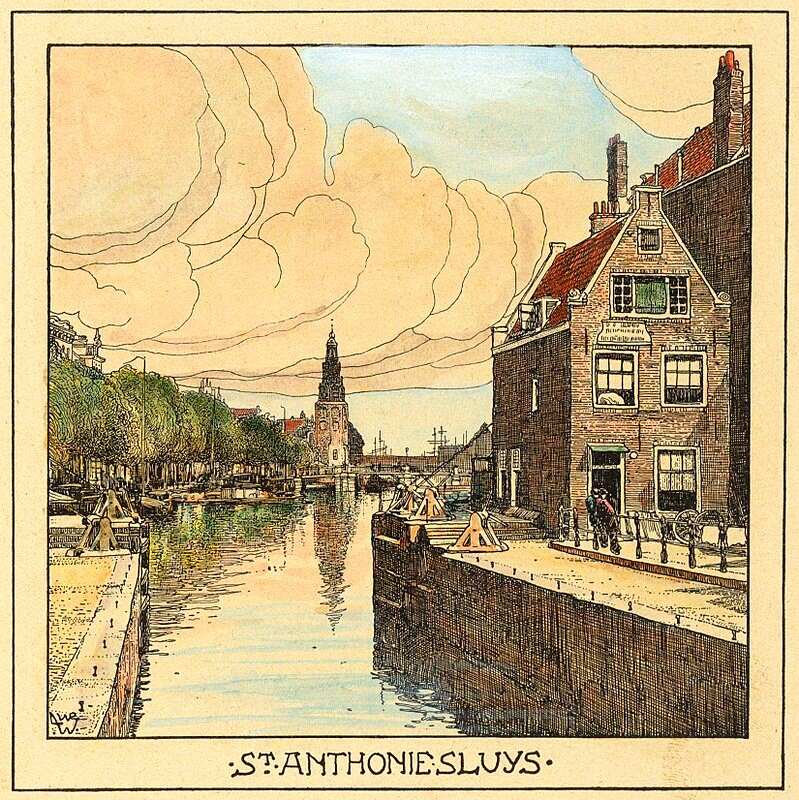
by Willem Wenckebach
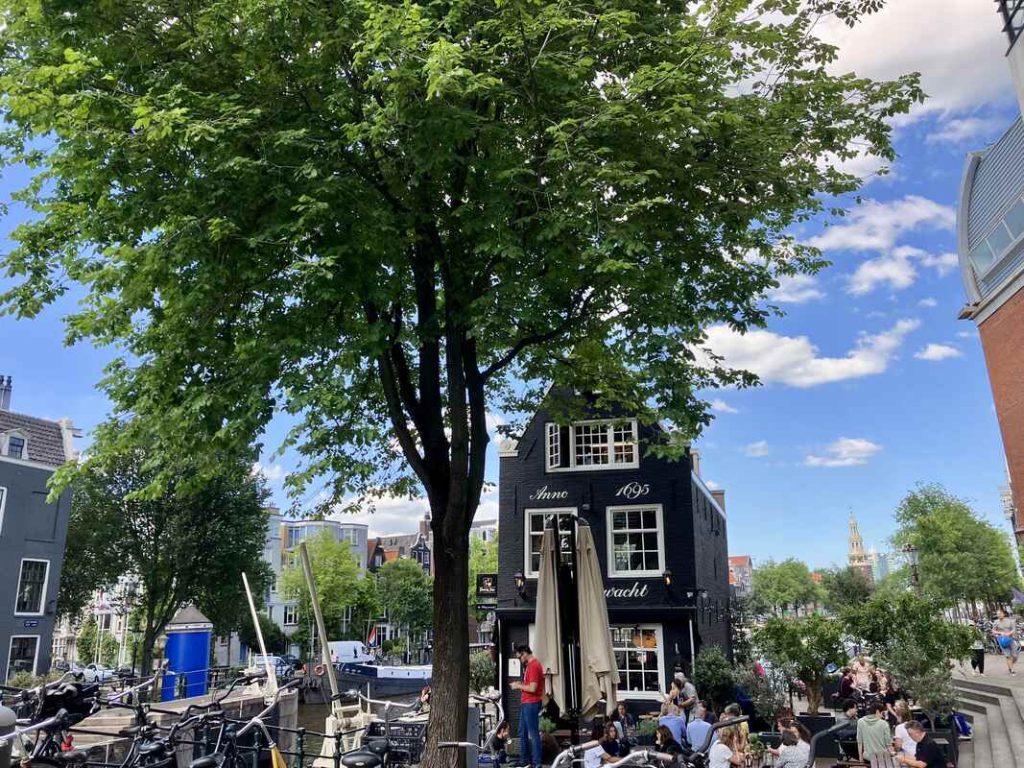
Picture credit: Jorinde
This brief interlude that is so important to both Kairos and Edeline foreshadows what is to come in more ways than one. Abraham Gosler and most of his relatives were killed in Auschwitz in 1942. The “Gosler house,” currently “Café de Sluyswacht,” is the only house remaining from the “Jewish Woodgarden” neighborhood.
Edeline herself had no idea which horrors awaited her… At least for a day, she and Kairos simply enjoyed eating ice cream and listening to a barrel organ on a sunny day in Amsterdam.
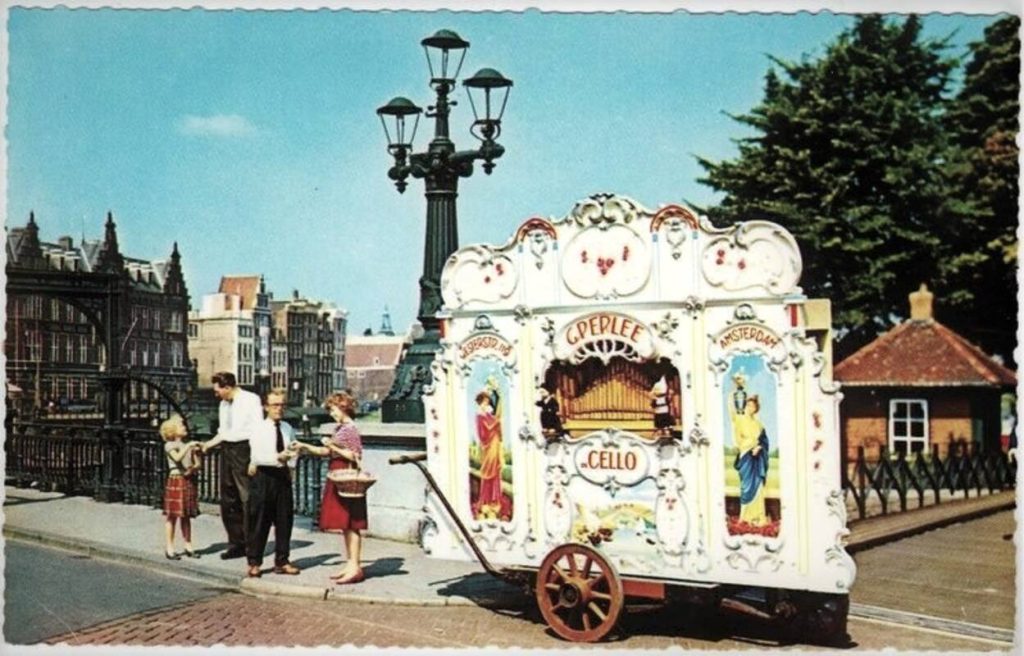
Unknown Photographer
Although I did not grow up in Amsterdam, I too loved the sound of the barrel organ that would go through the streets of downtown Eindhoven. My sisters and I would always be excited when our mother took us to the “big” city where we would receive a couple of coins each to give to the organ grinder. Like Edeline Adler, I too would be enchanted by the colorful, kitschy splendor of the organ cranking out swirling waltzes in the otherwise often bleak greyness of rainy Holland.
Also see: https://www.immaterieelerfgoed.nl/en/straatexploitatievandraaiorgels
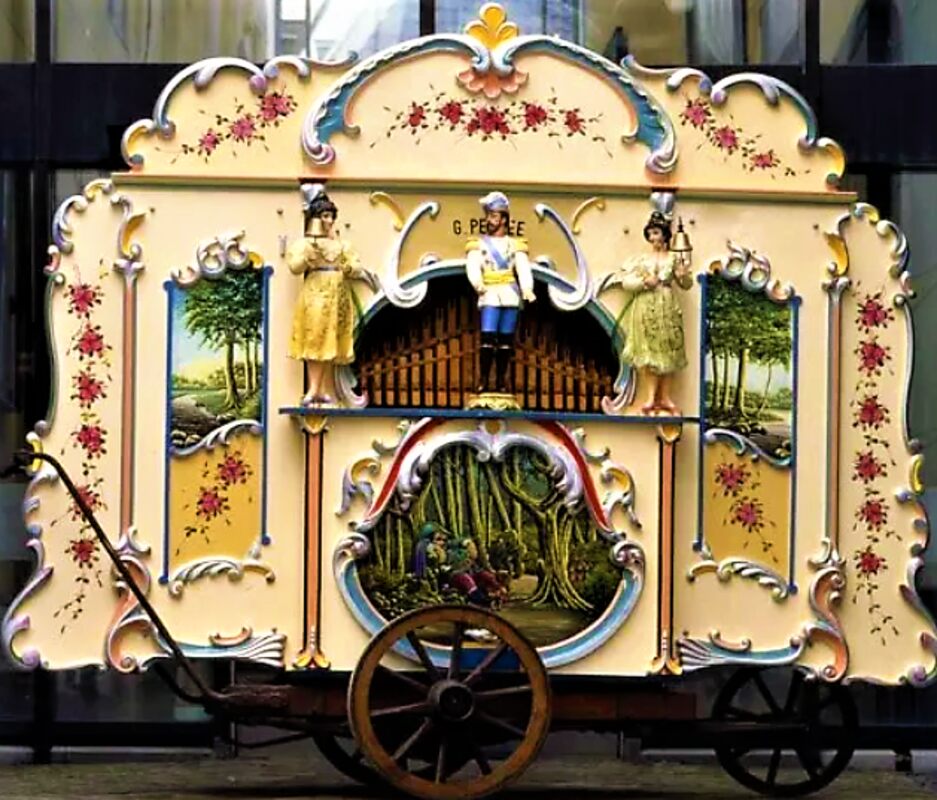
Unknown Photographer
Another beautiful Amsterdam Barrel Organ much like the one Edeline Adler admired is called “Little Runny Nose. ” It is a national celebrity because it saved the lives of many people. On May 7, 1945 people were dancing in Amsterdam because the Nazis had surrendered, but they randomly started shooting people from the second floor of a corner building. Twenty-two people died, but the Barrel Organ saved the lives of more than 25 people who took cover behind it. The name of the organ, “Little runny nose” is used as an expression in Dutch to signify a little naughty boy.
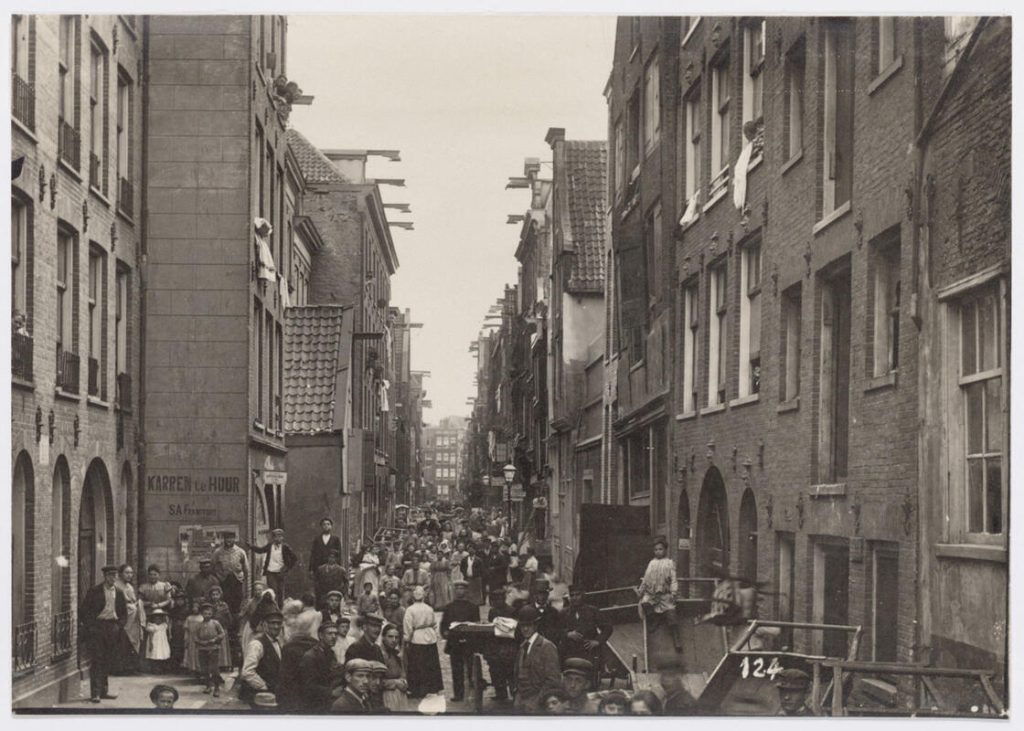
Picture credit: 1940 Amsterdam Archive
The “Joden Houttuinen” or Jewish Wood Gardens no longer exist; it was basically just one street with dilapidated houses that ran along the canal called Houtkopersburgwal from the Gosler House up to the Marken Square. Nowadays, the Jodenbree Street (which ran parallel with the Jewish Wood Gardens) is now bordered by the Amsterdam University of the Arts and an apartment building with shops.
At the time that Kairos and Edeline visited the area, there was a synagogue, warehouses, a clothing factory, stores selling pickles, matzos, scrap metal, and old rags, as well as the Olympia Boxing School (of Olympian boxer Ben Bril, who would survive Bergen-Belsen). –See Jewish Amsterdam for more information.
* * * * *
Another Jewish “institution” in Amsterdam was the Koco Ice cream Parlor in Van de Wou Street, which Kairos and Edeline Adler visited. It was owned by German-Jewish immigrants Ernst Cahn and Alfred Kohn. It was one of a chain of popular ice cream parlors. Anne Frank also mentions the Rijn Street branch of Koco in her diary.
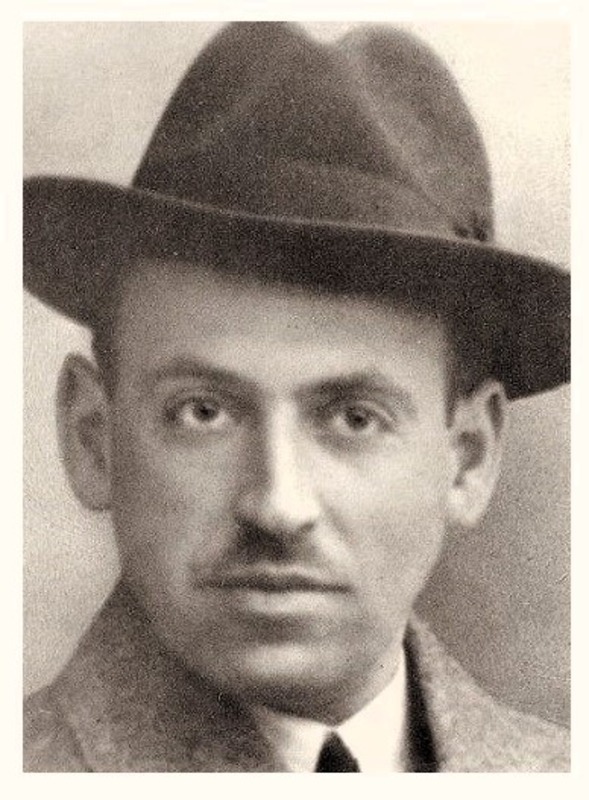
Unknown photographers
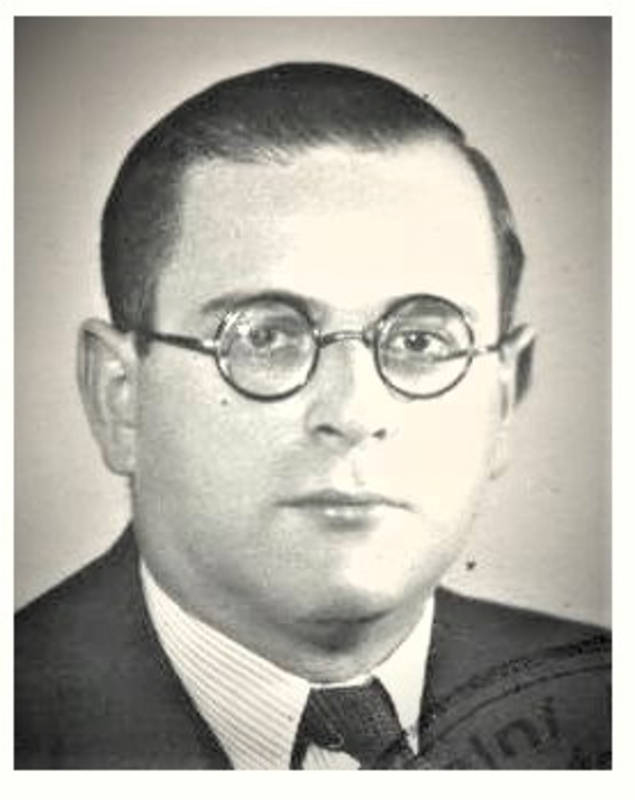
After repeatedly having been targets of antisemitism, Ernst Cahn and his staff at the Van de Wou Street location were involved in an altercation with the Grüne Polizei on February 19th, 1941, which ultimately resulted in Ernst Cahn being the first Dutch citizen to be executed by the Nazis. Alfred Kohn would die in Auschwitz in 1945. On February 25th , 1992 a commemorative plaque was officially revealed on the spot where Koco used to be.
Also see: https://www.joodsamsterdam.nl/ijssalon-koco/
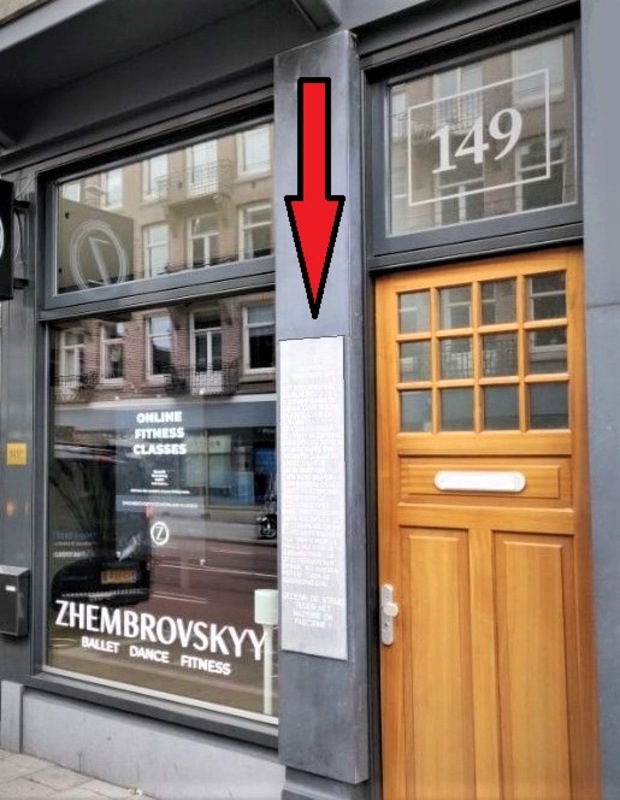
Picture credit: Jorinde
The plaque states:
Wednesday, February 19th, 1941. This used to be the location of Ice Cream Parlor Koco owned by the German-Jewish immigrants E. Cahn and A. Kohn. Together with their clients they fought the German occupier. Cahn was arrested and was the first citizen in the Netherlands to be executed. The events at Koco resulted in razzias against Jewish citizens of Amsterdam on February 22nd and 23rd, which led in turn to the February Strike on the 25th to protest against the persecution of the Jews. Commemorate the fight against Nazism and Fascism.
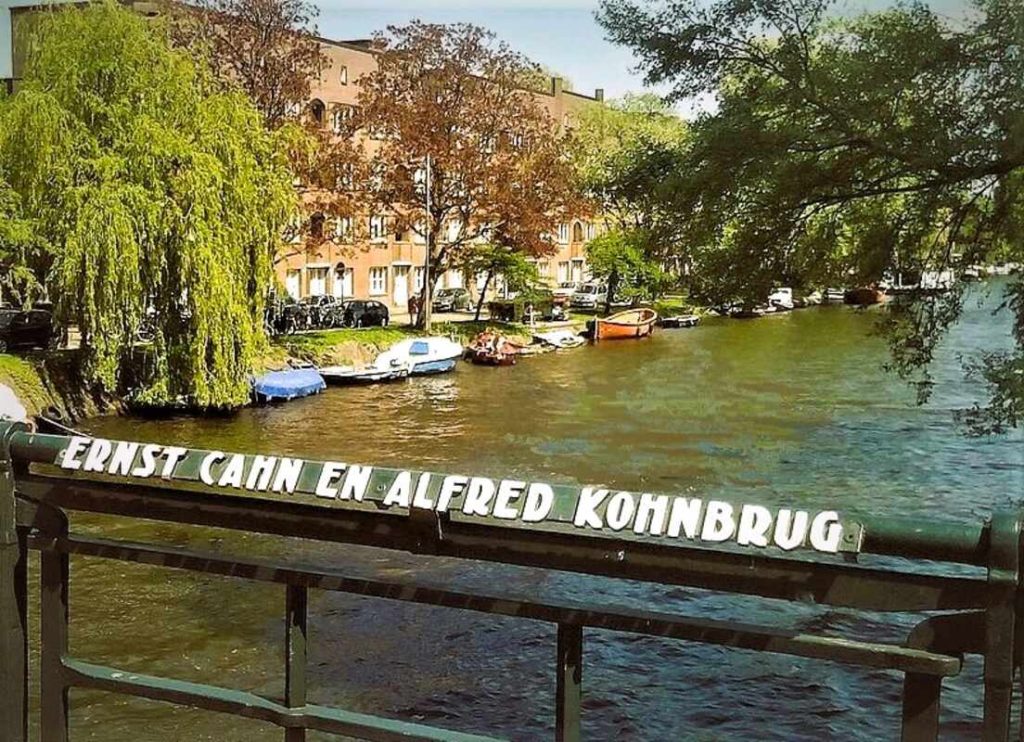
similar galleries
discover
JOIN MY NEWSLETTER
To receive announcements about new blogs, images, essays, lectures, and novels, please sign up.
